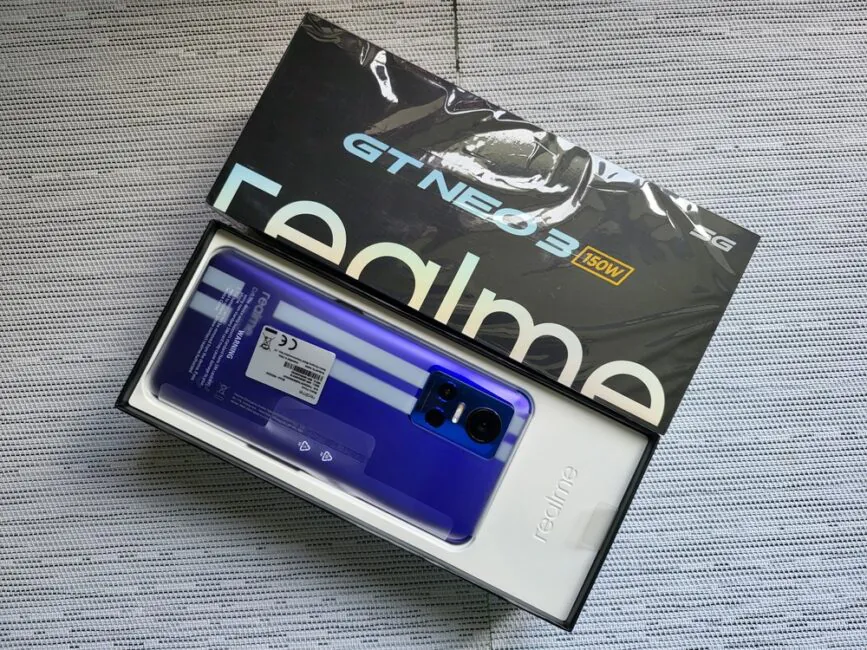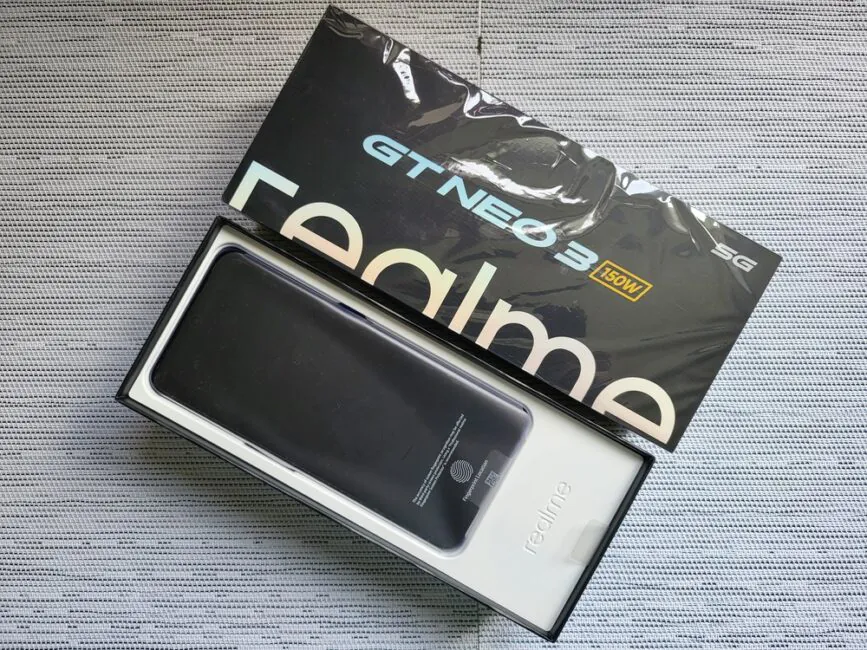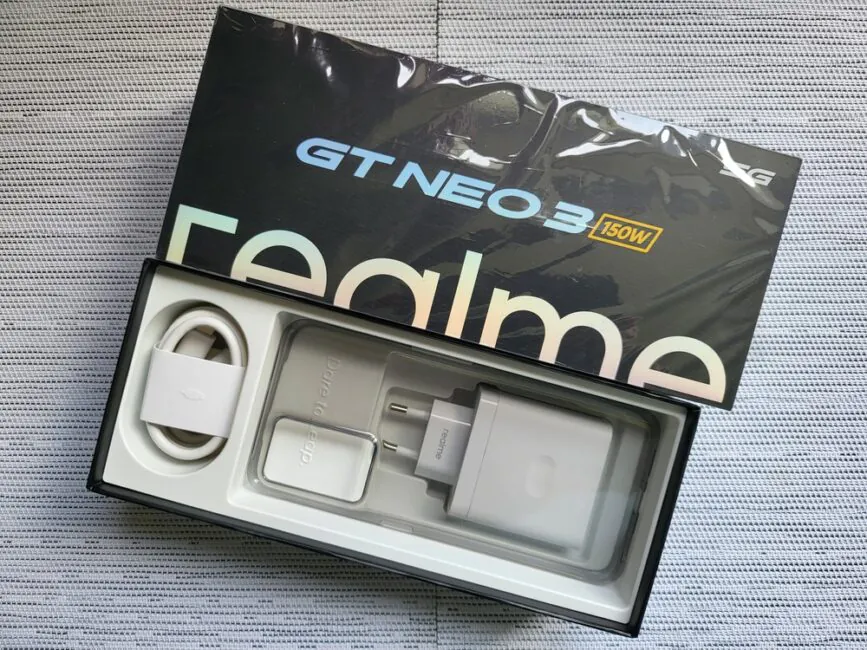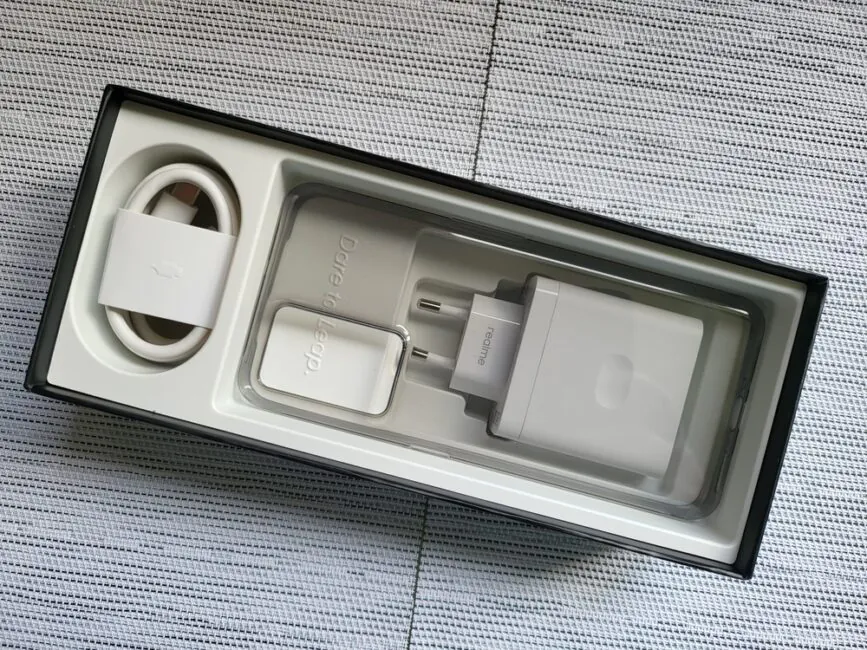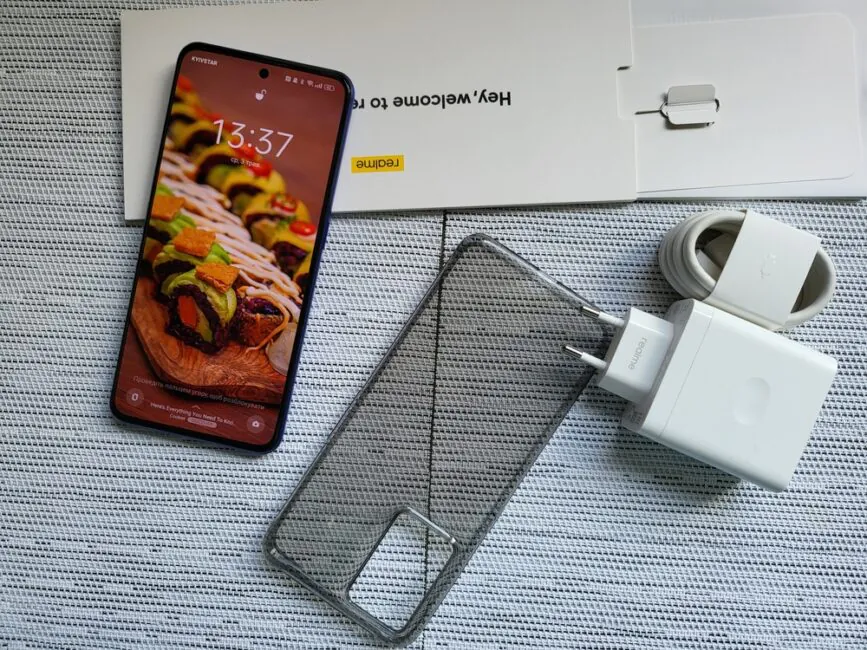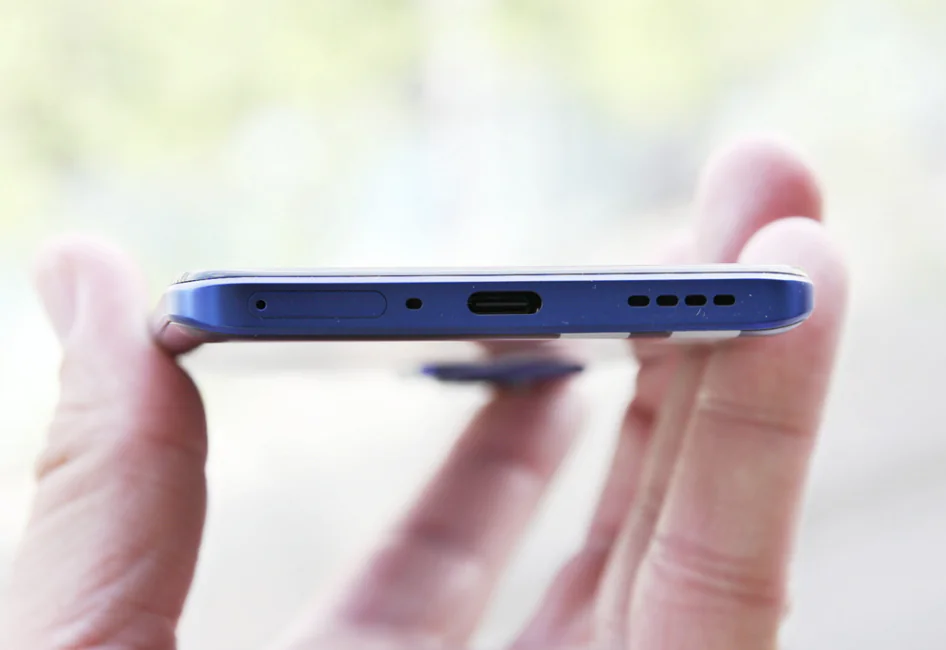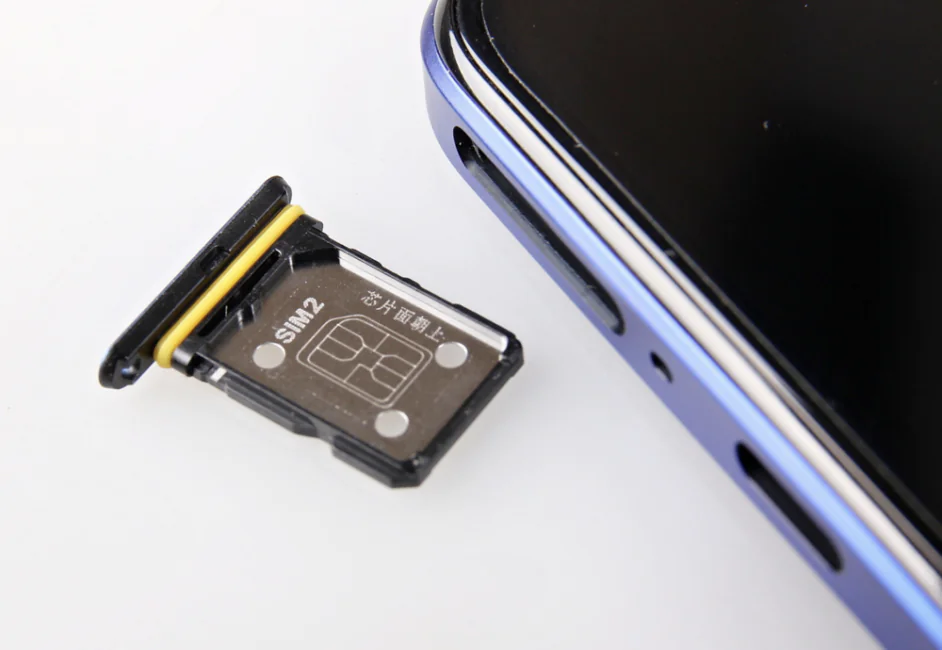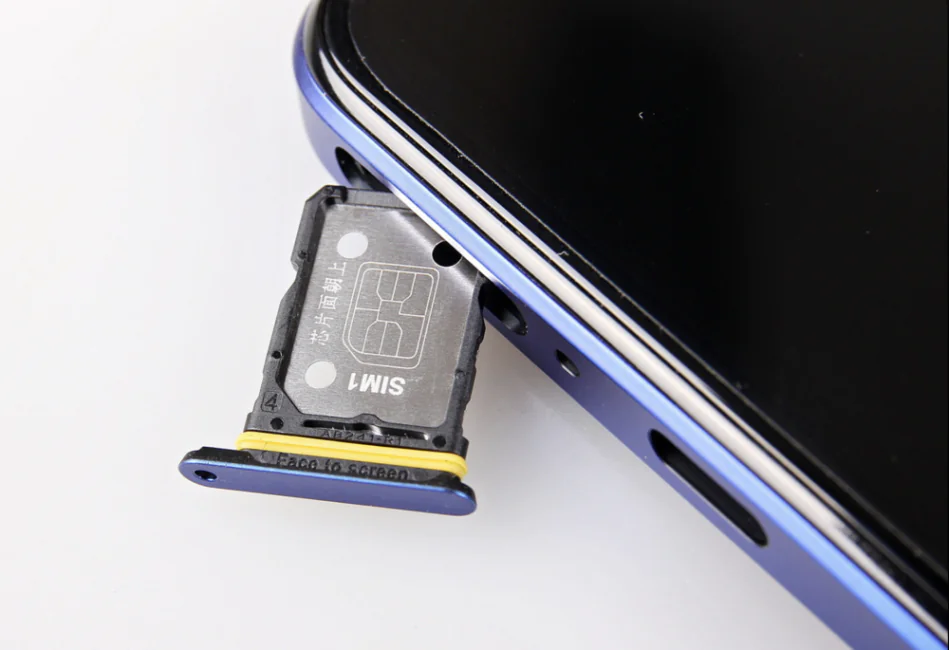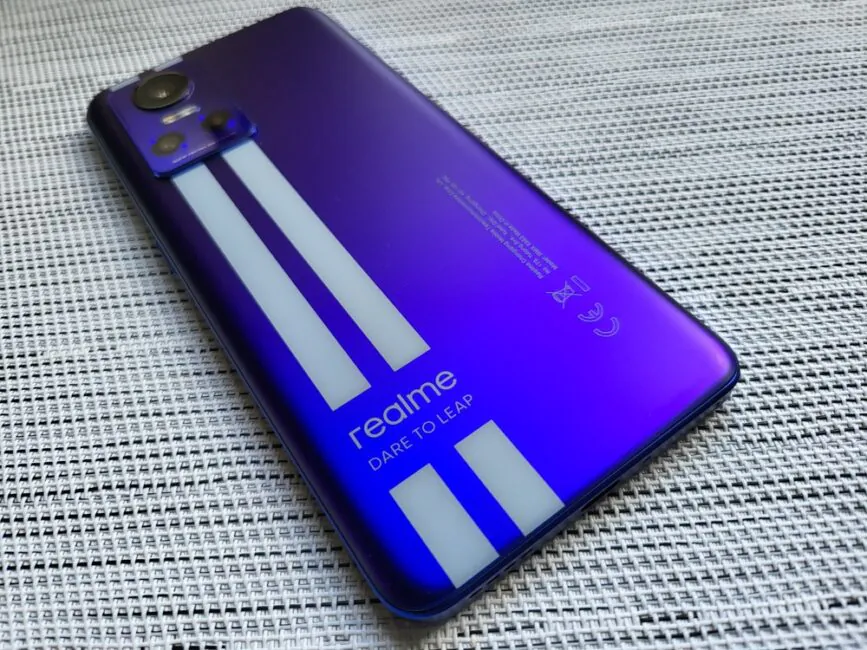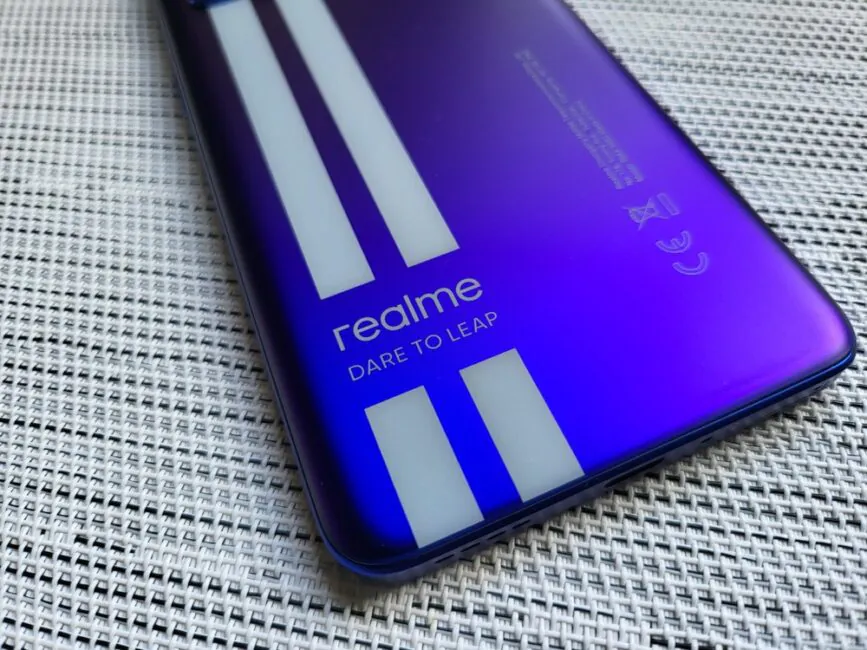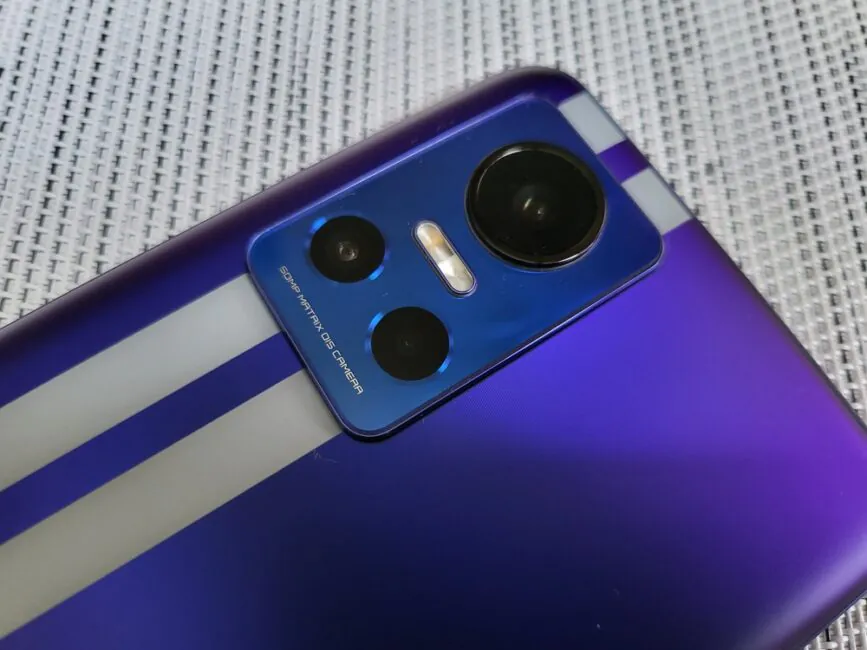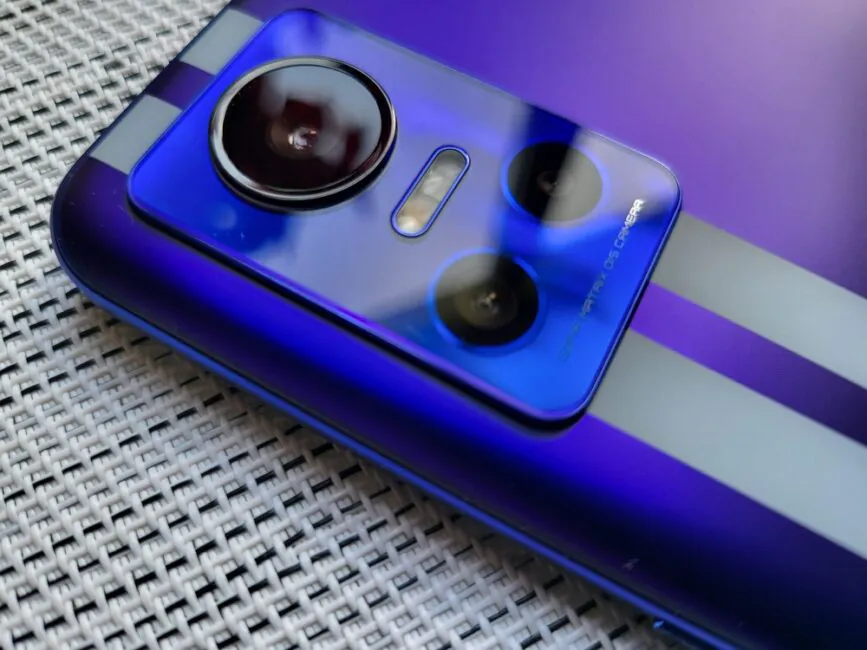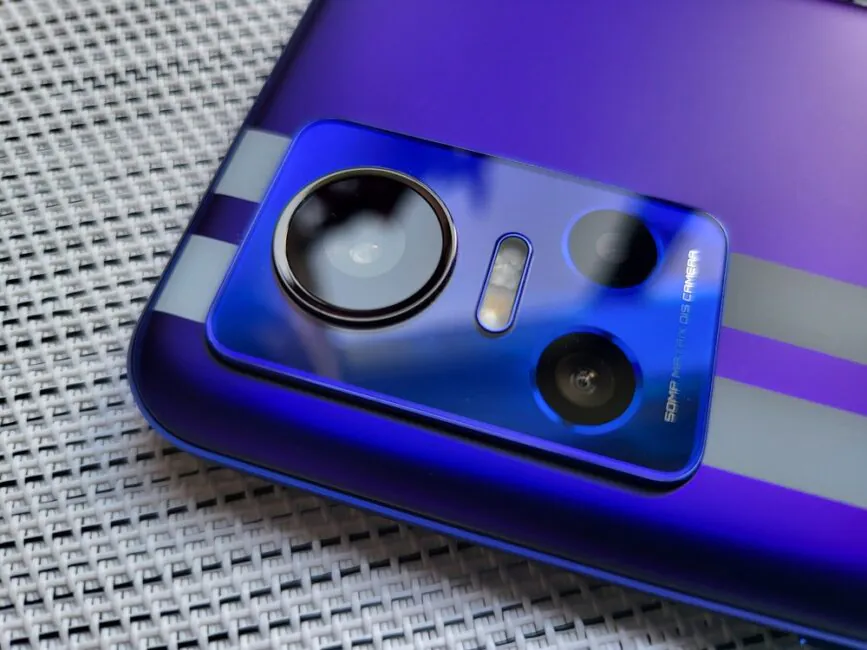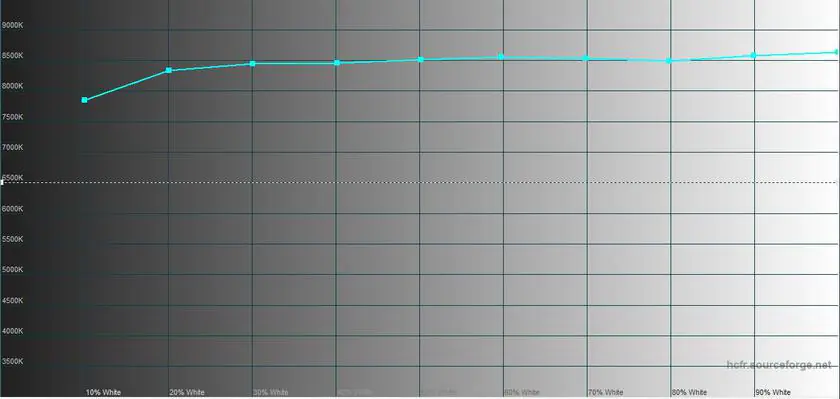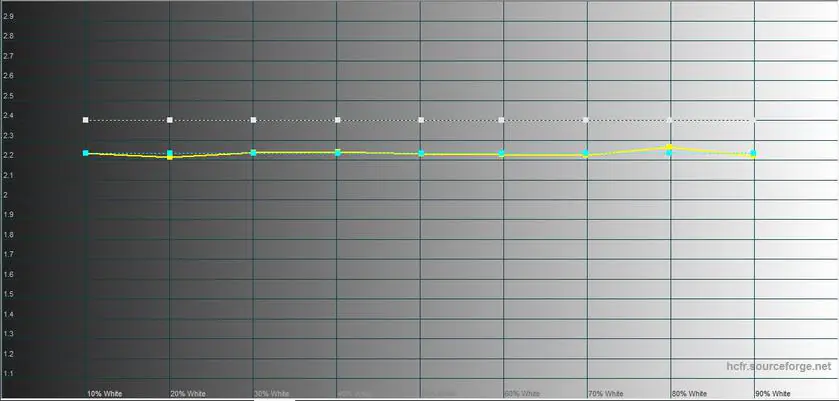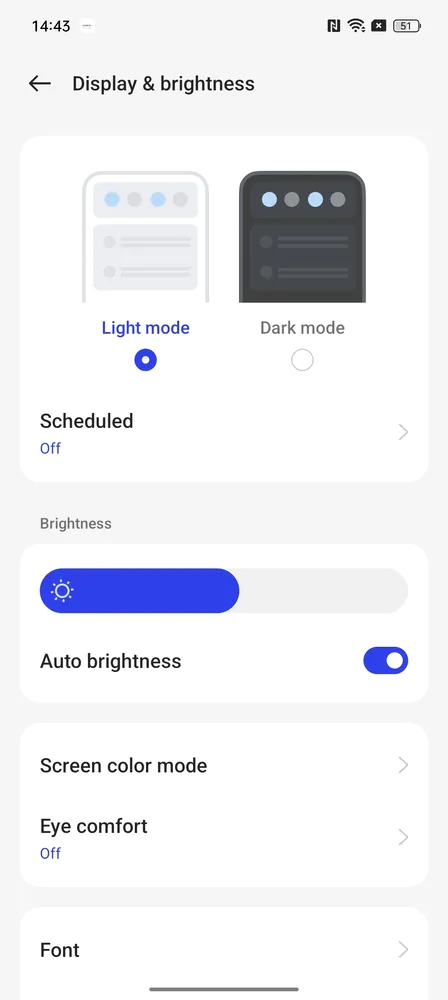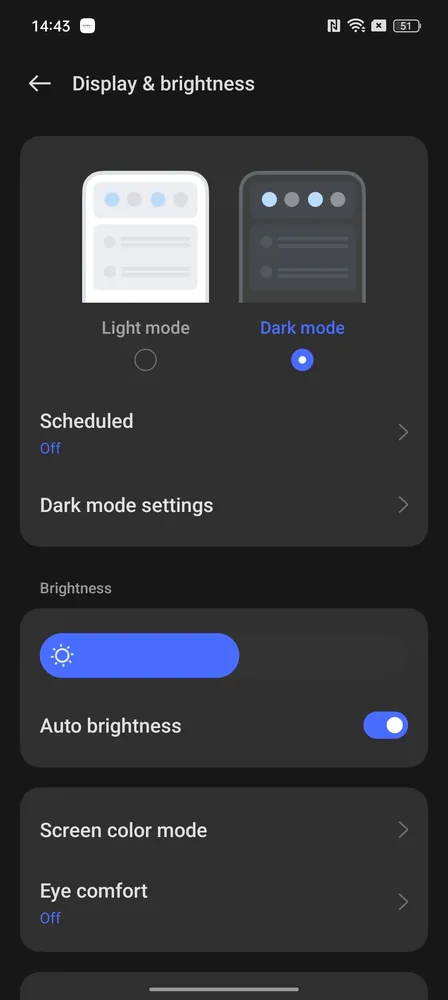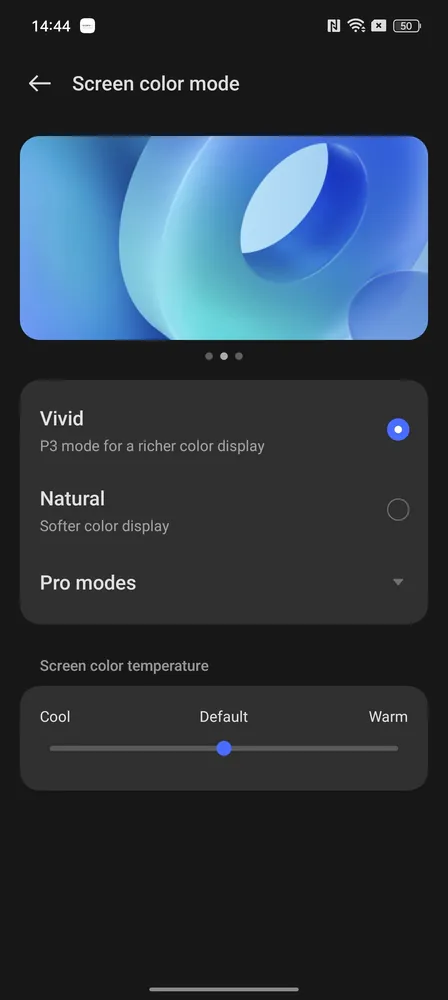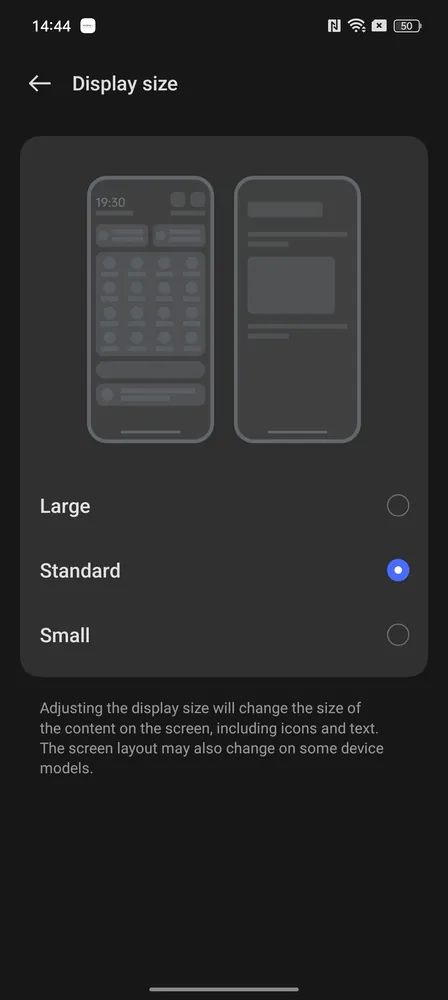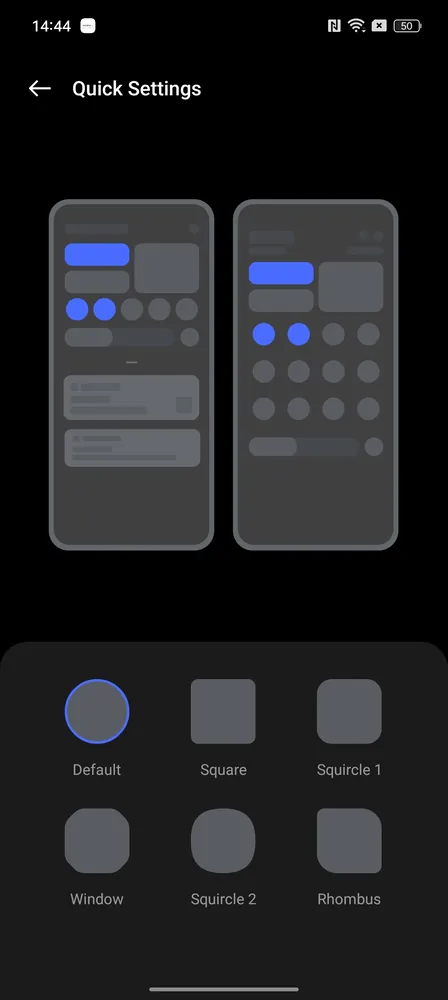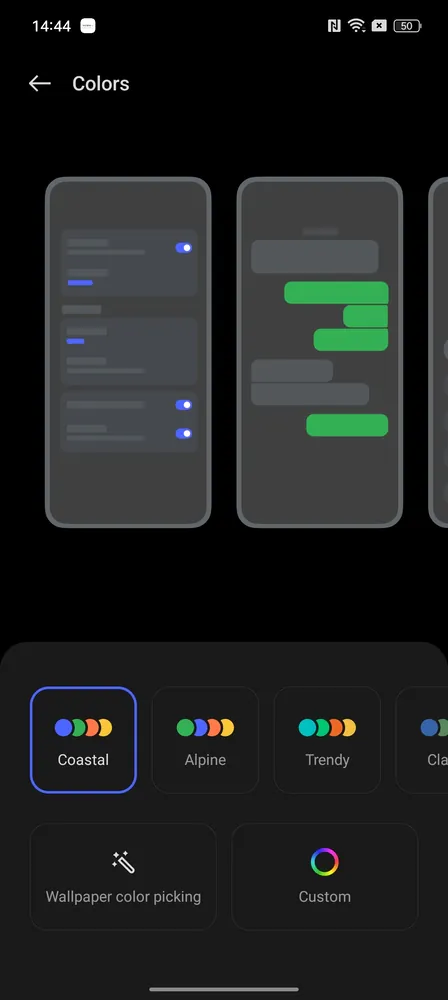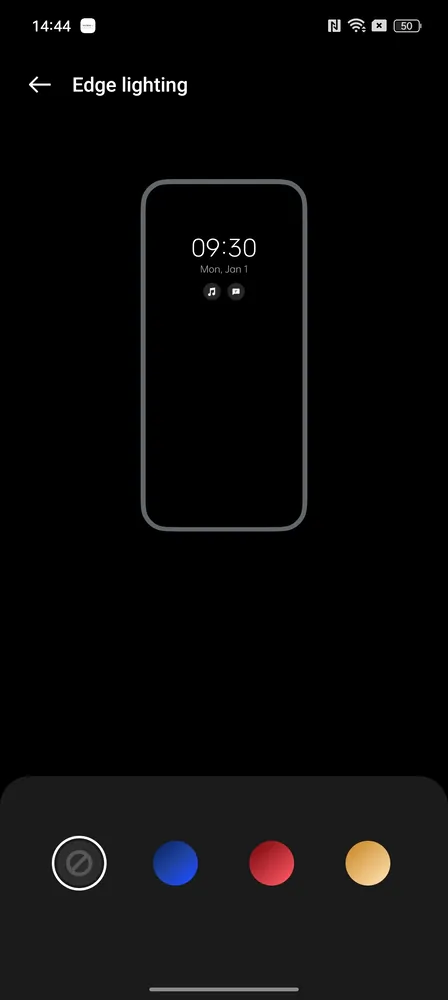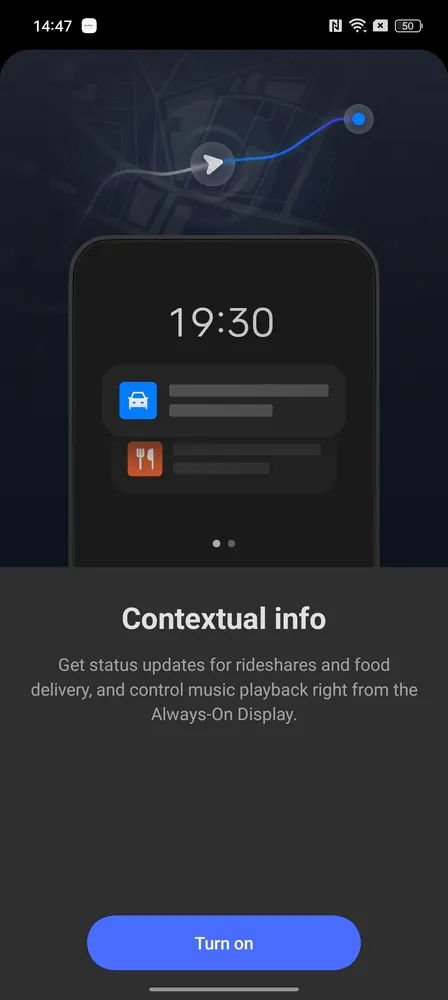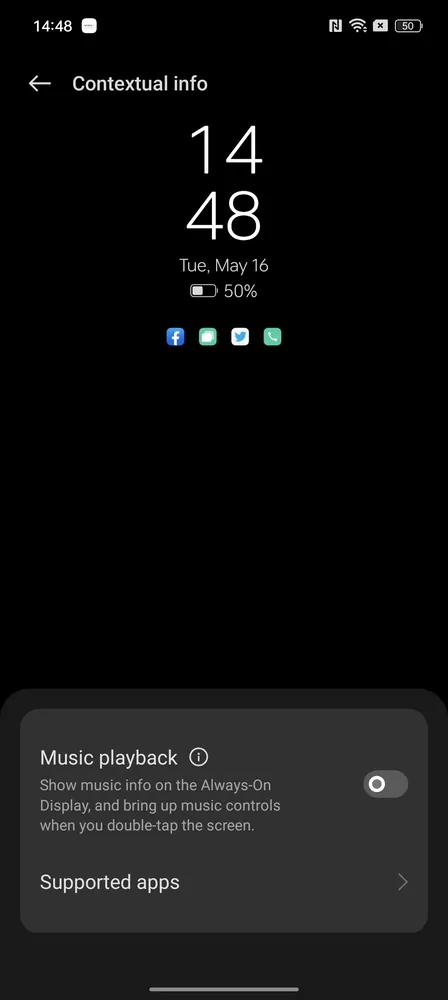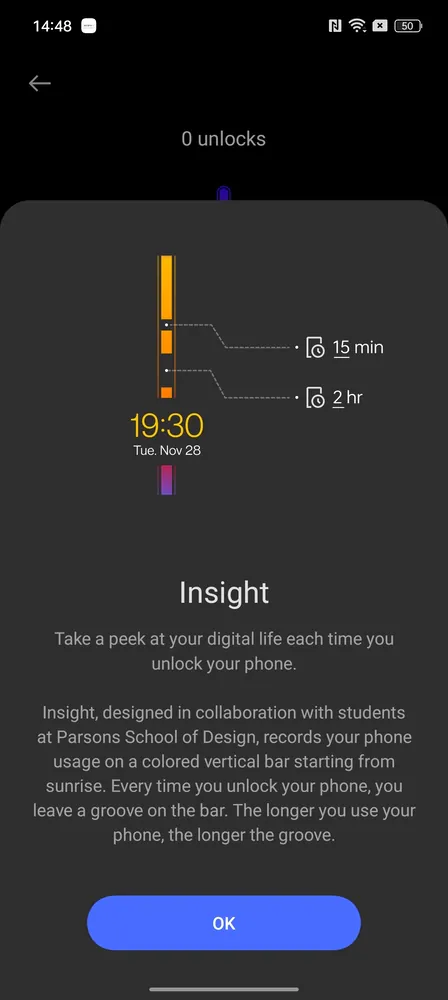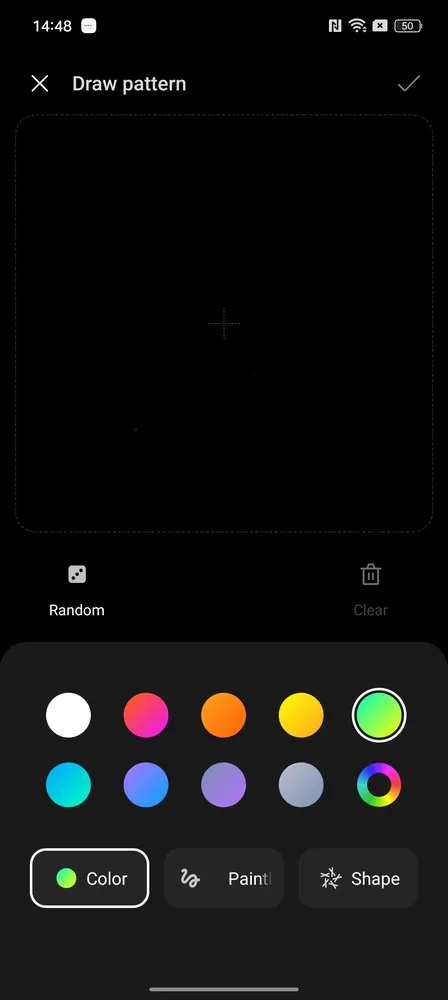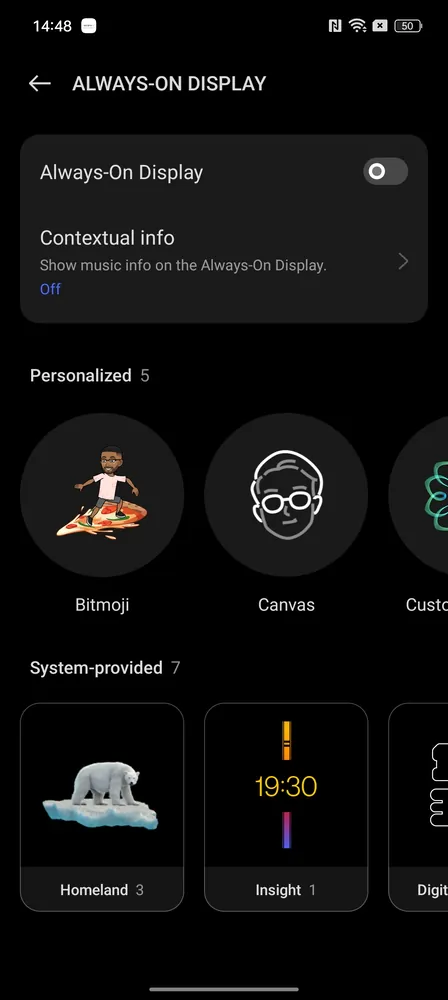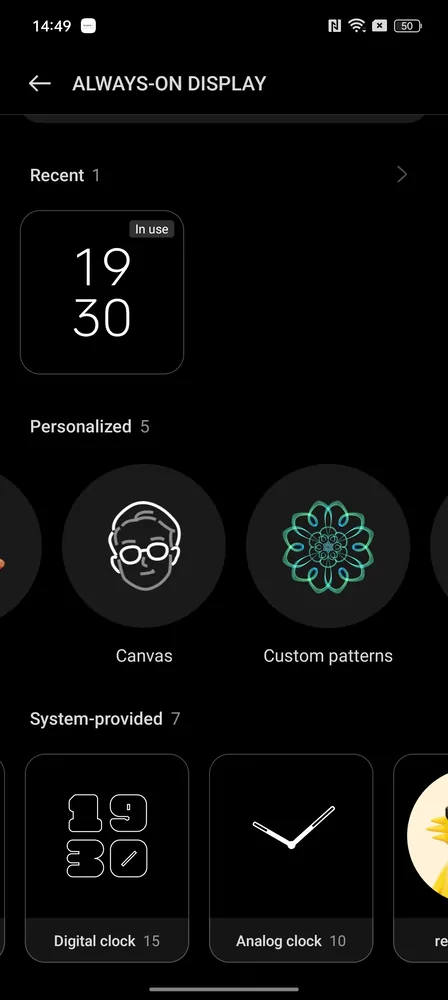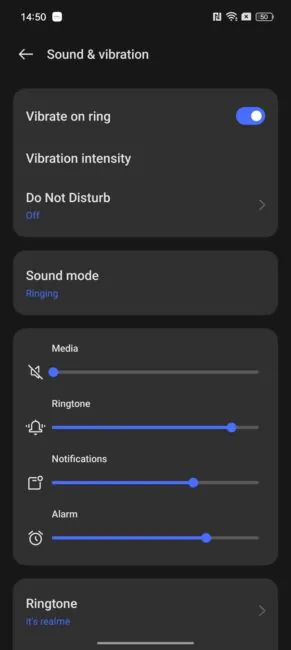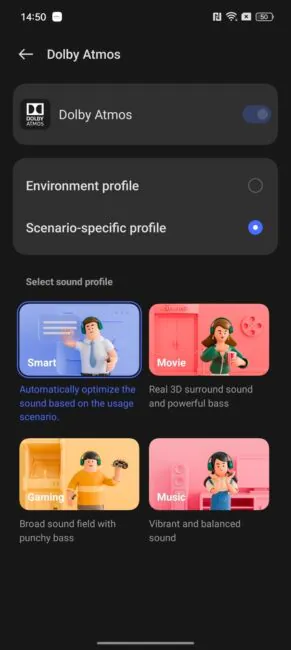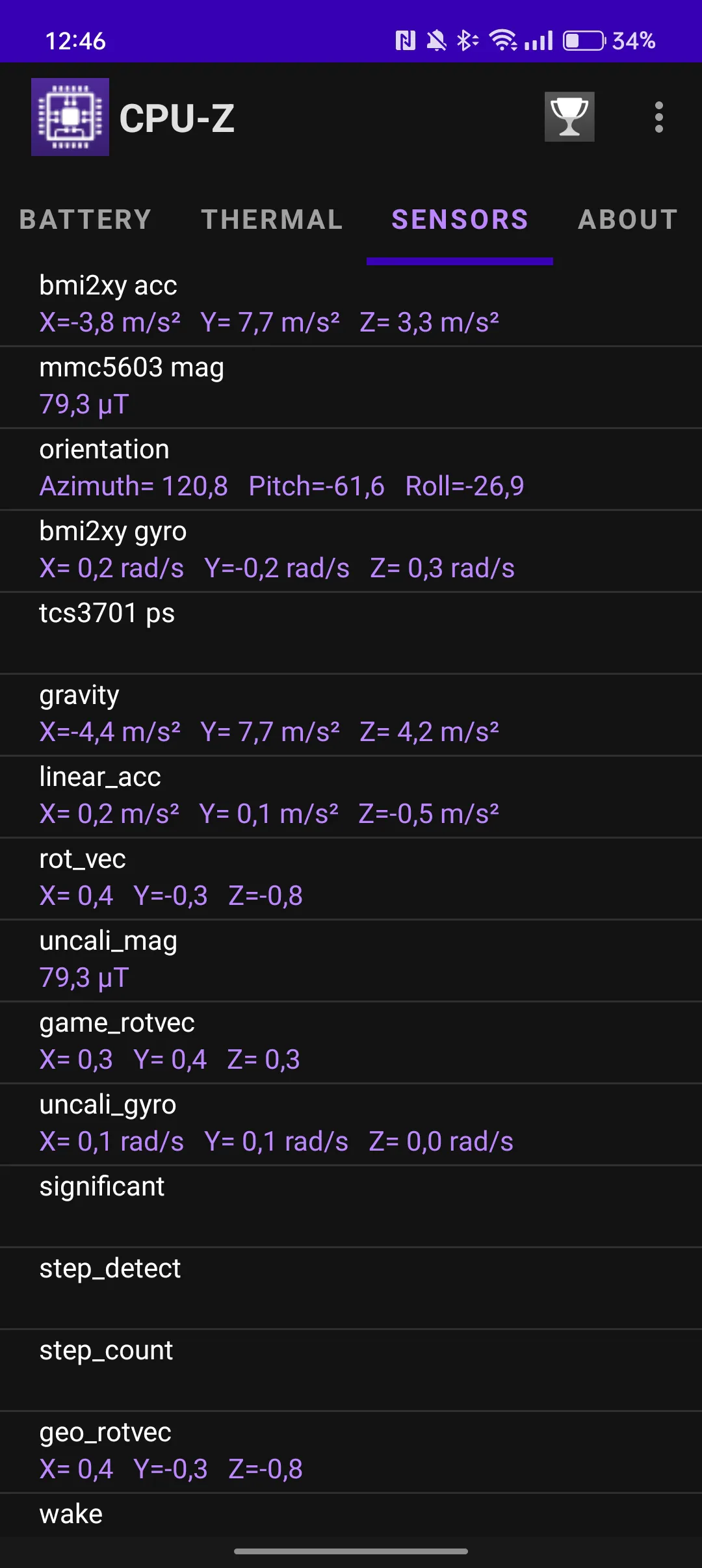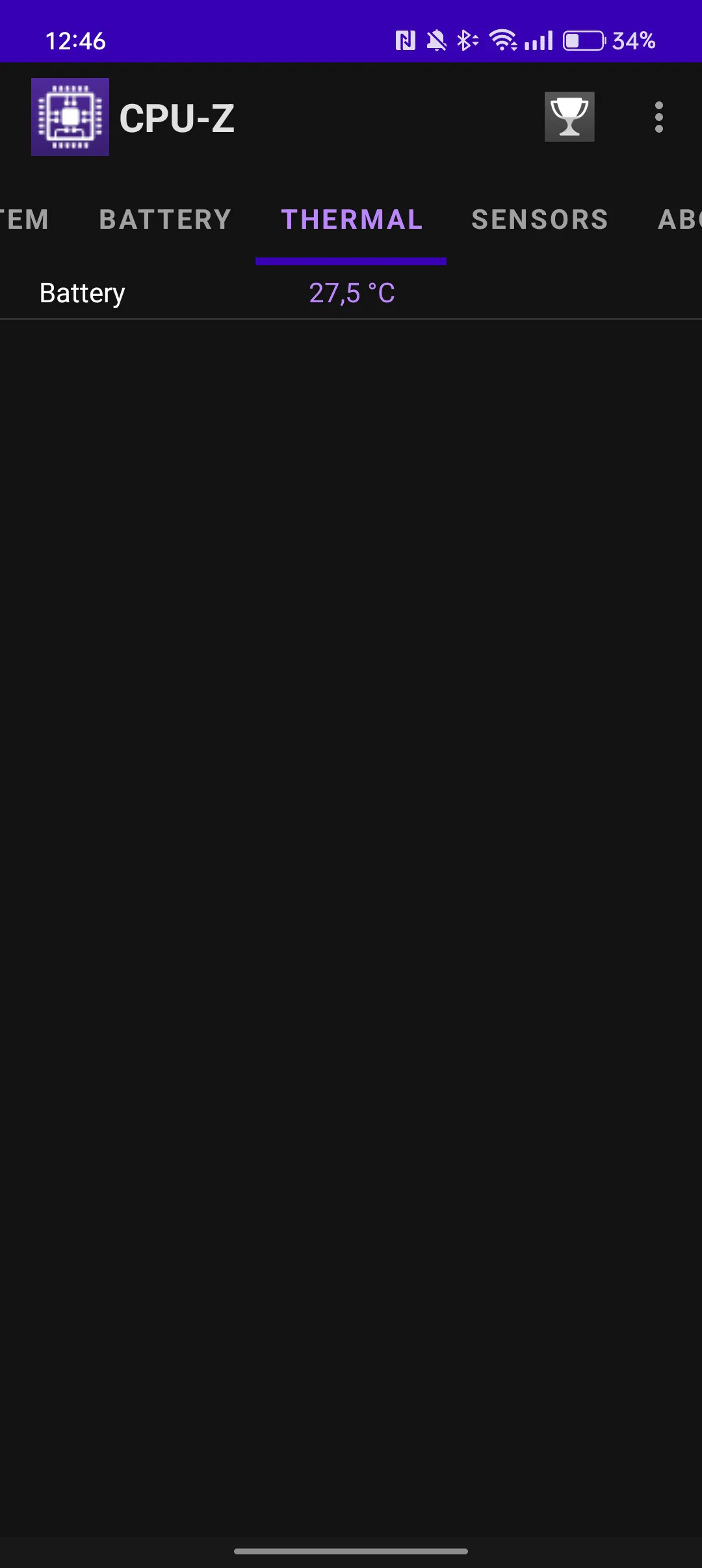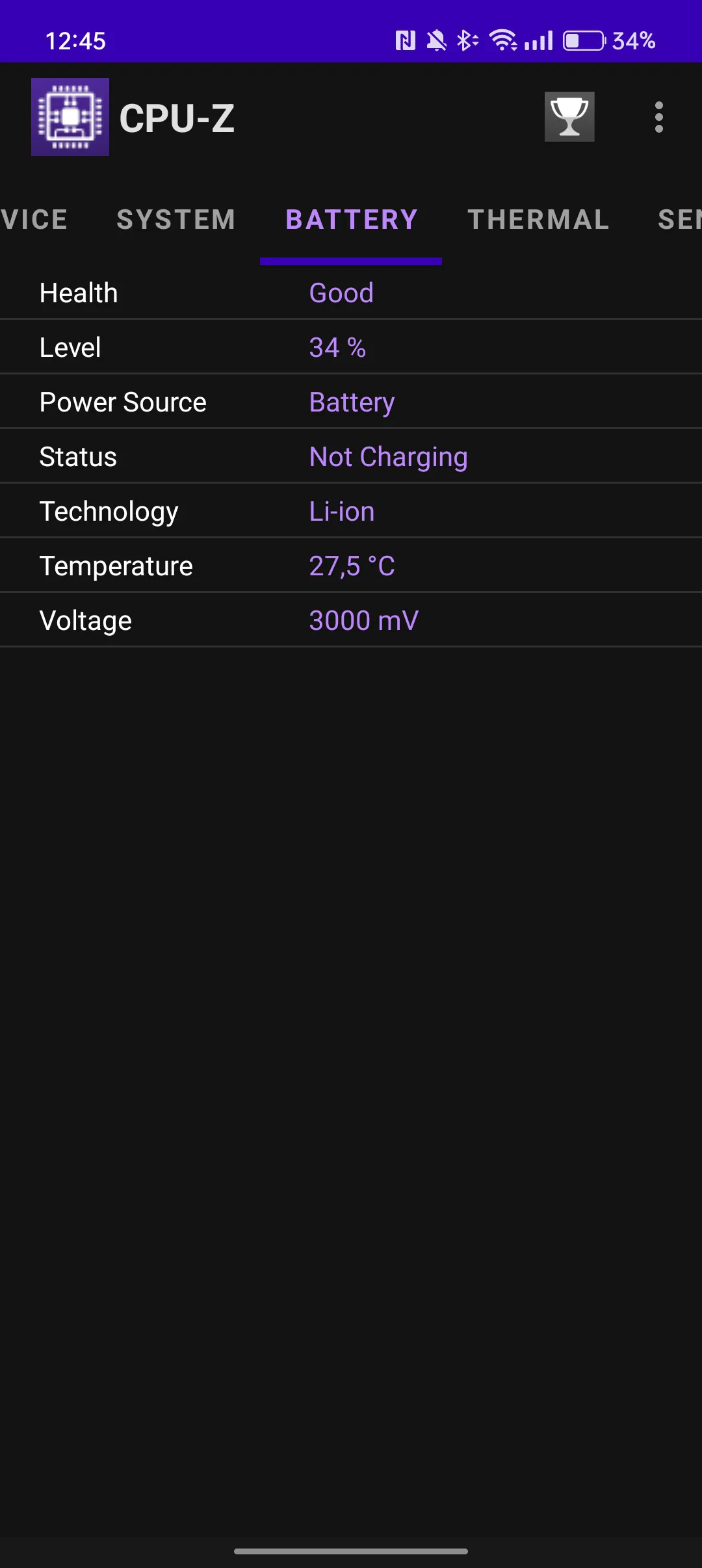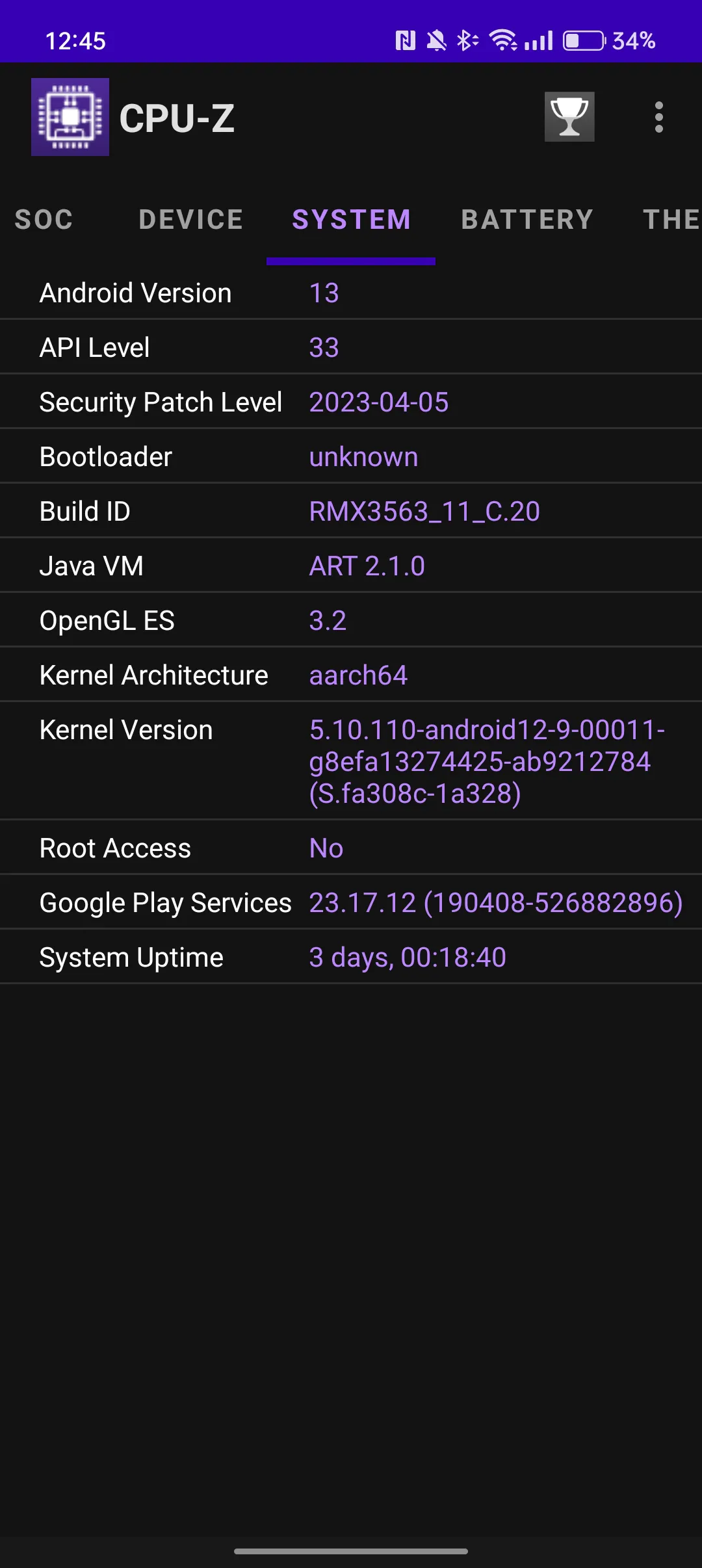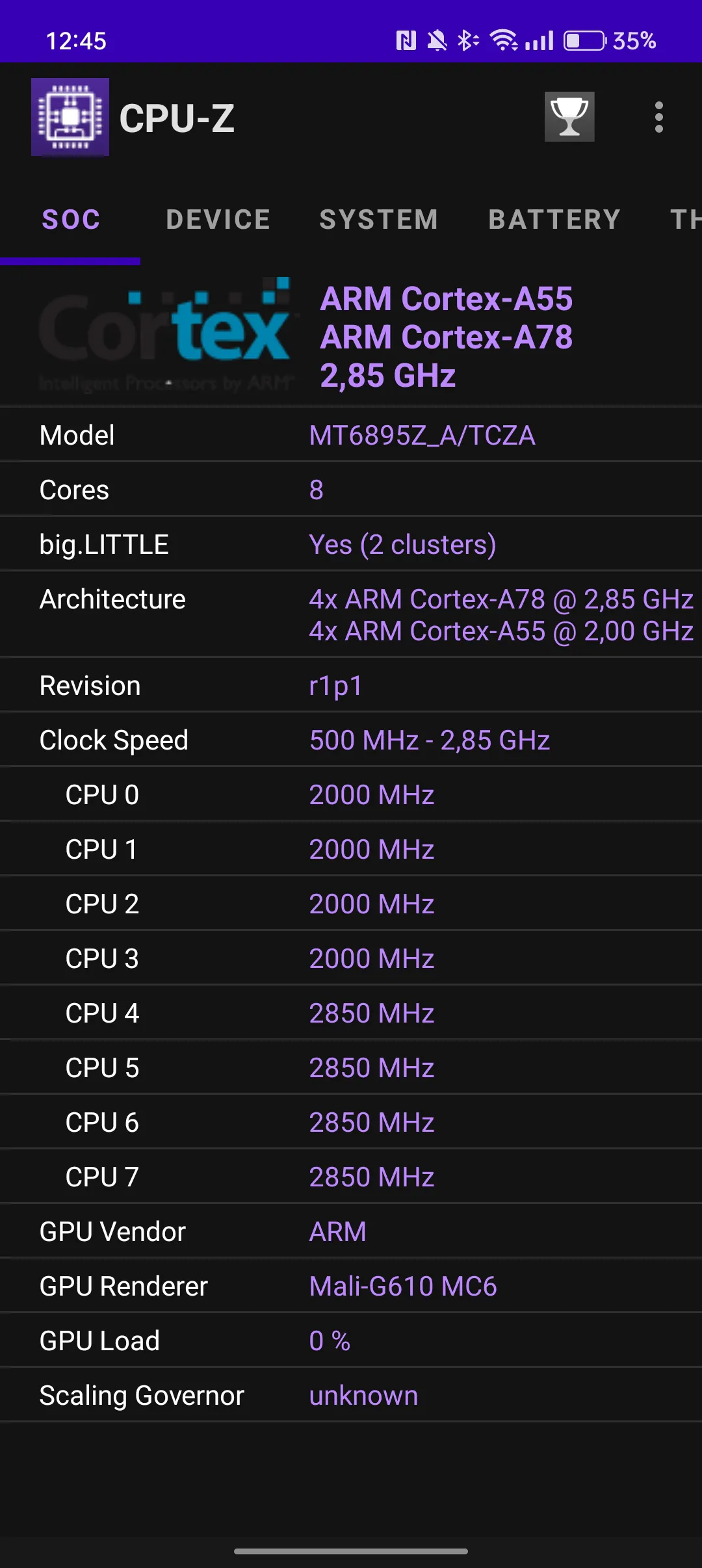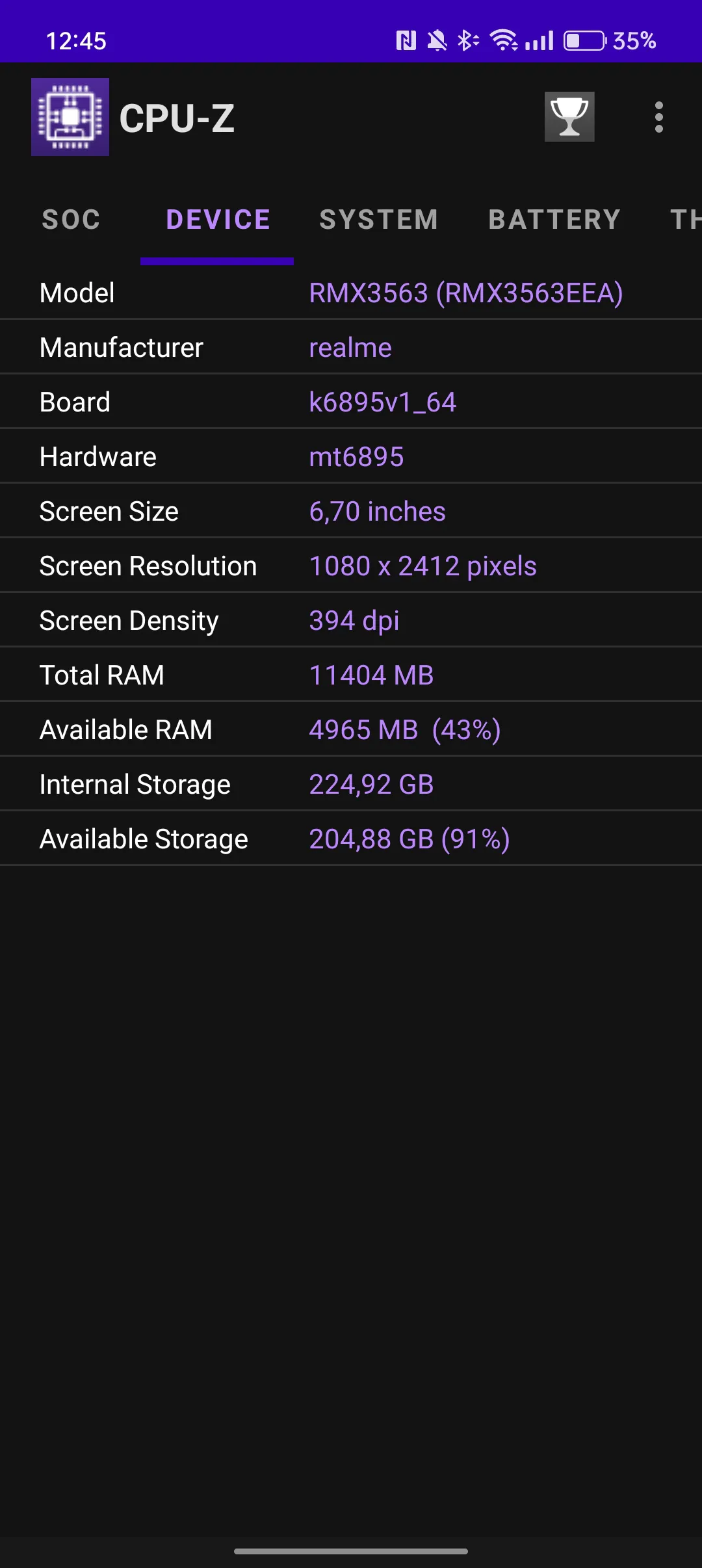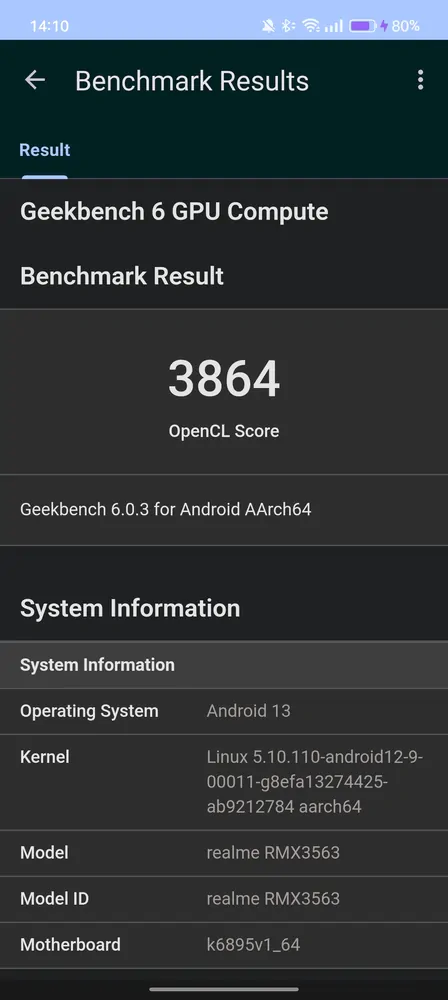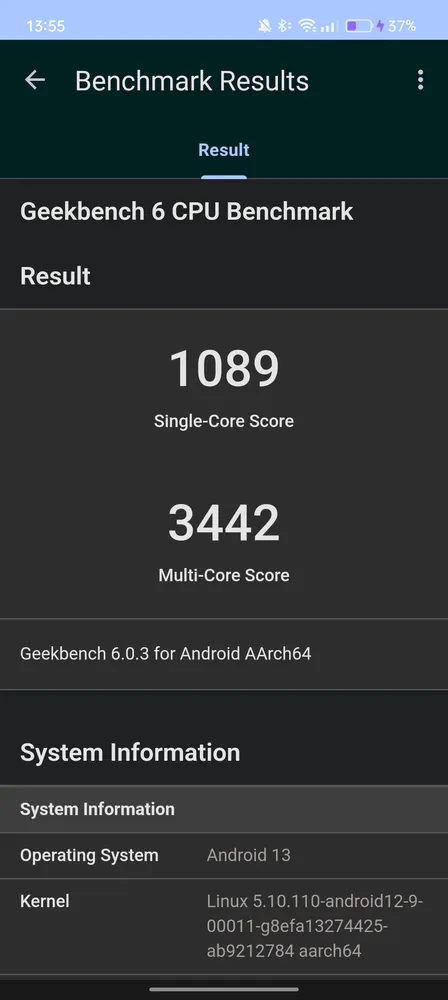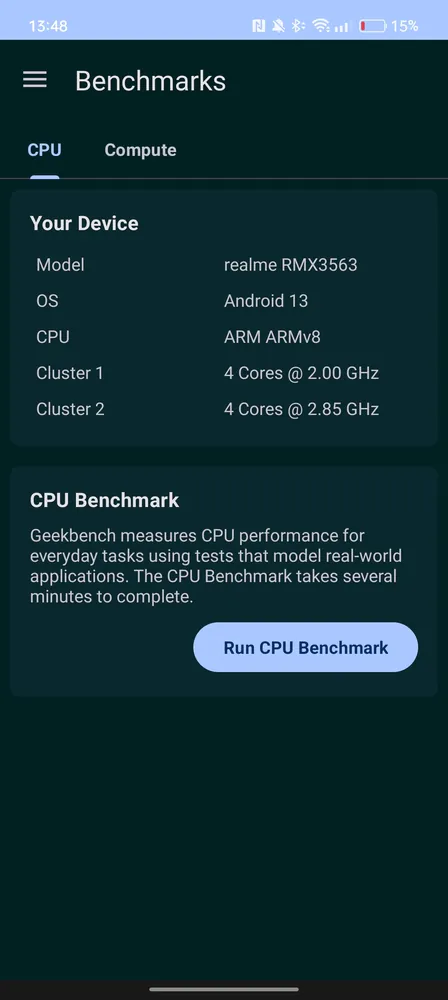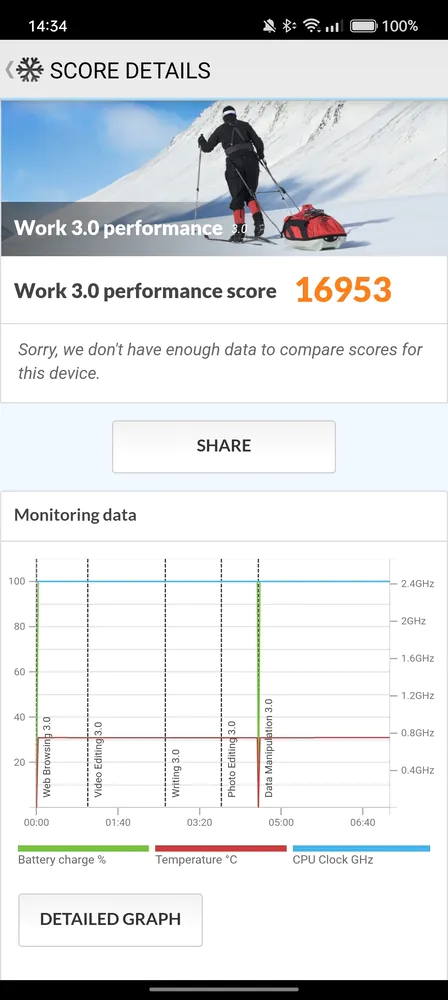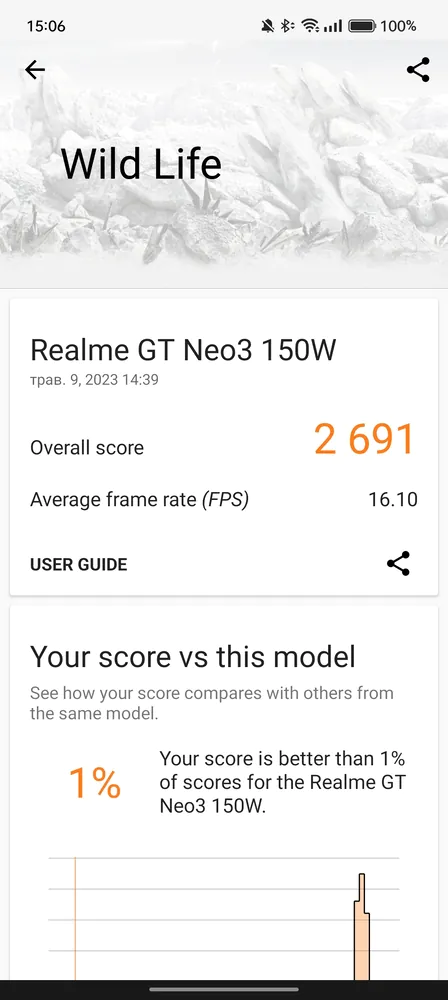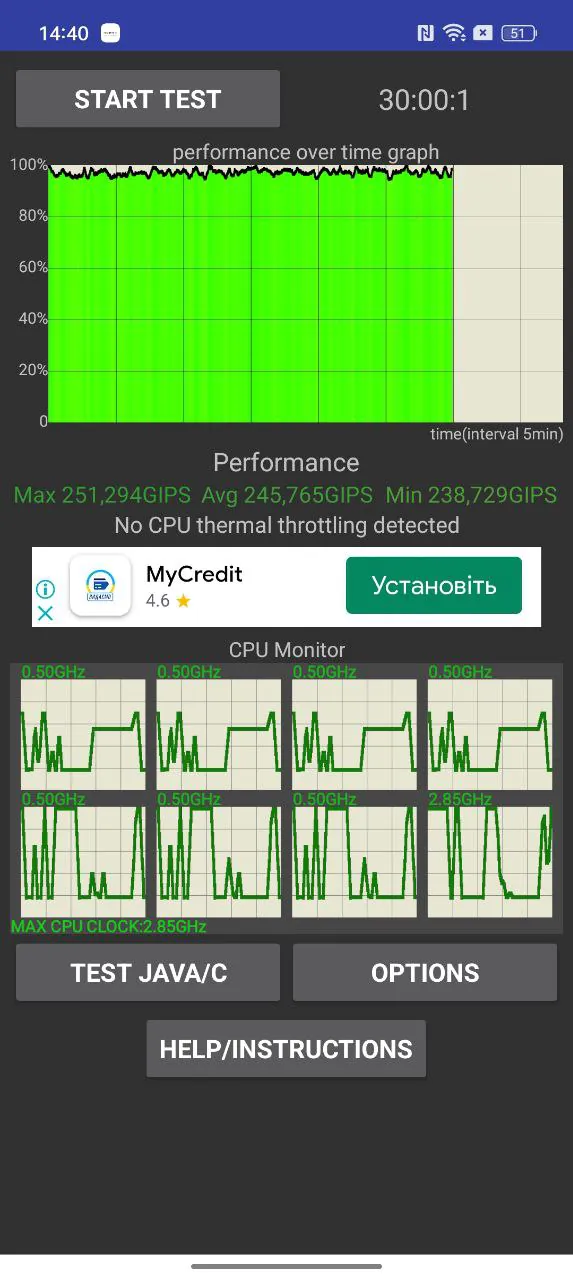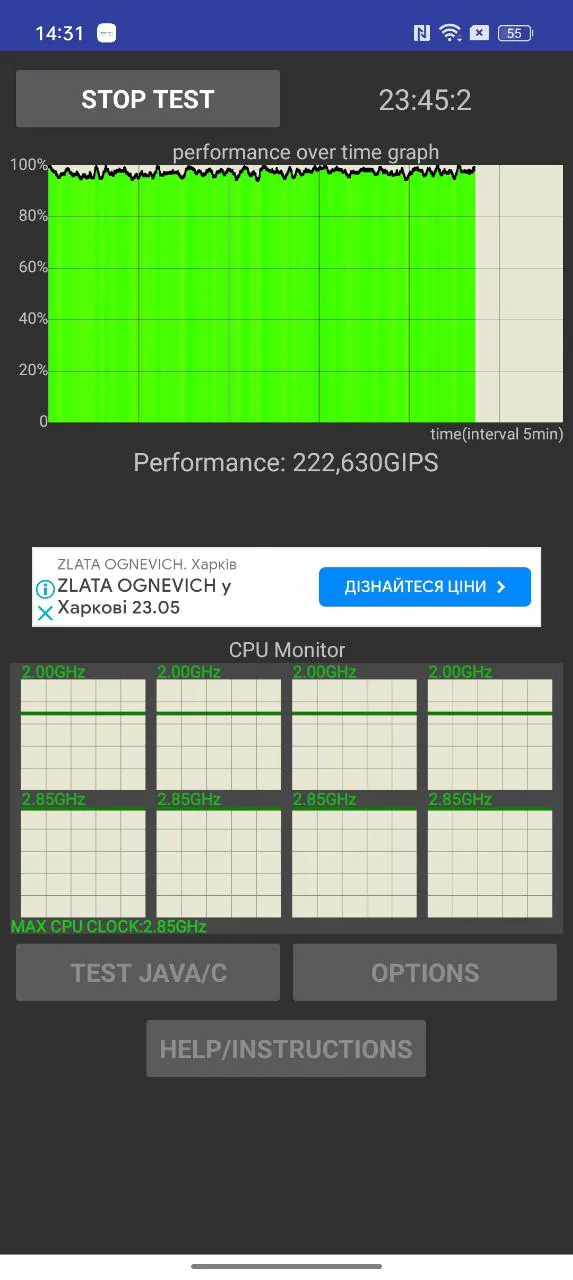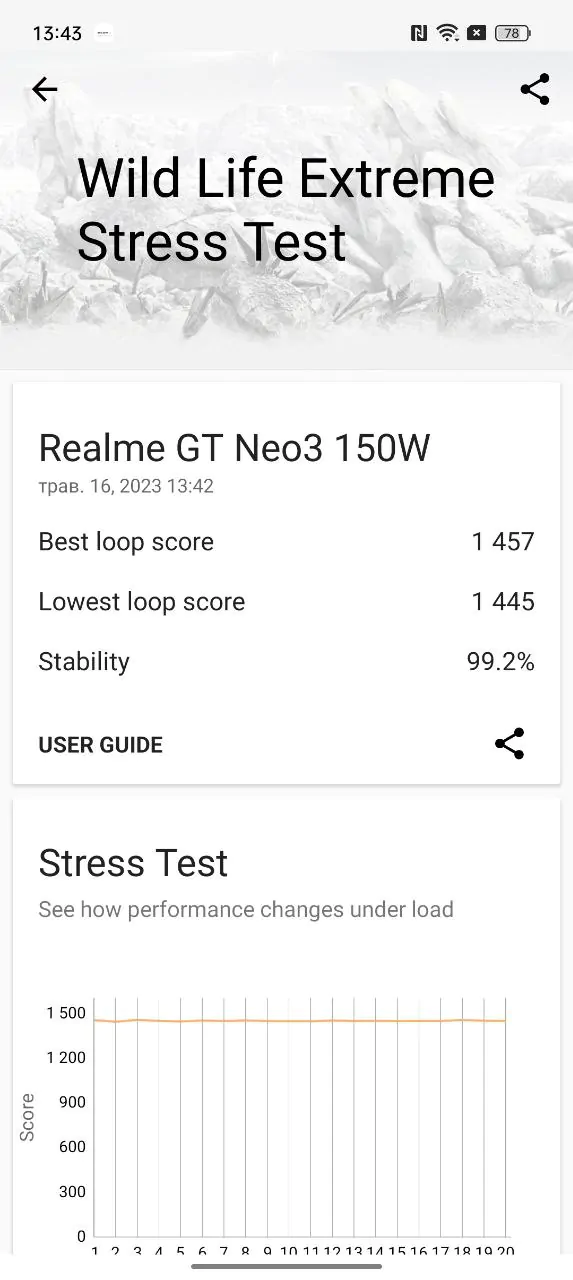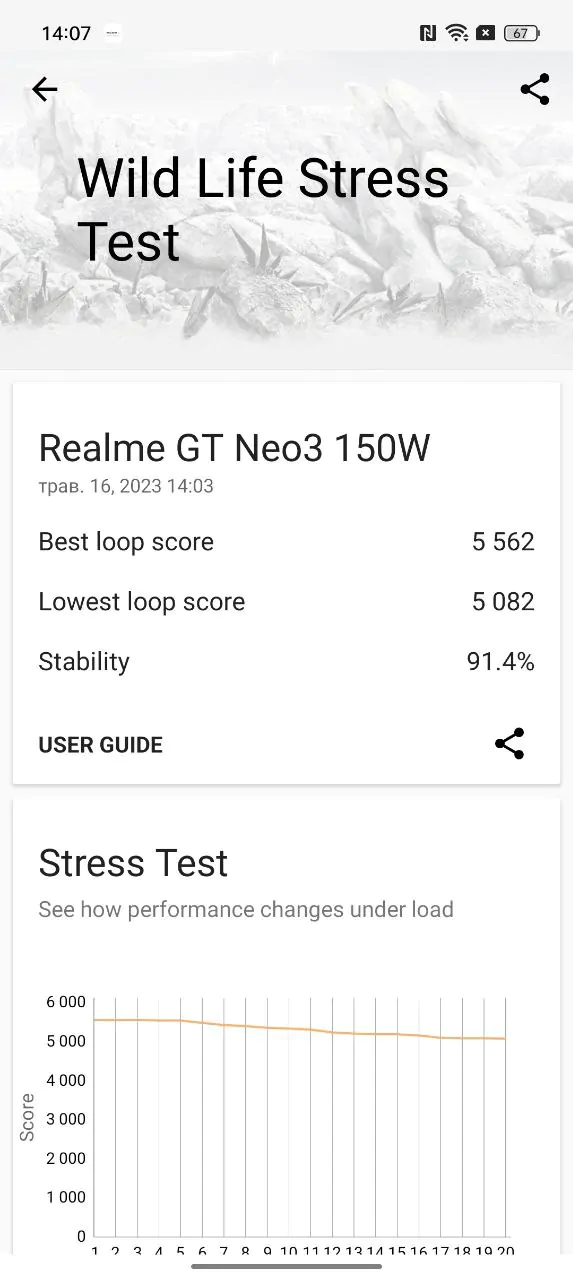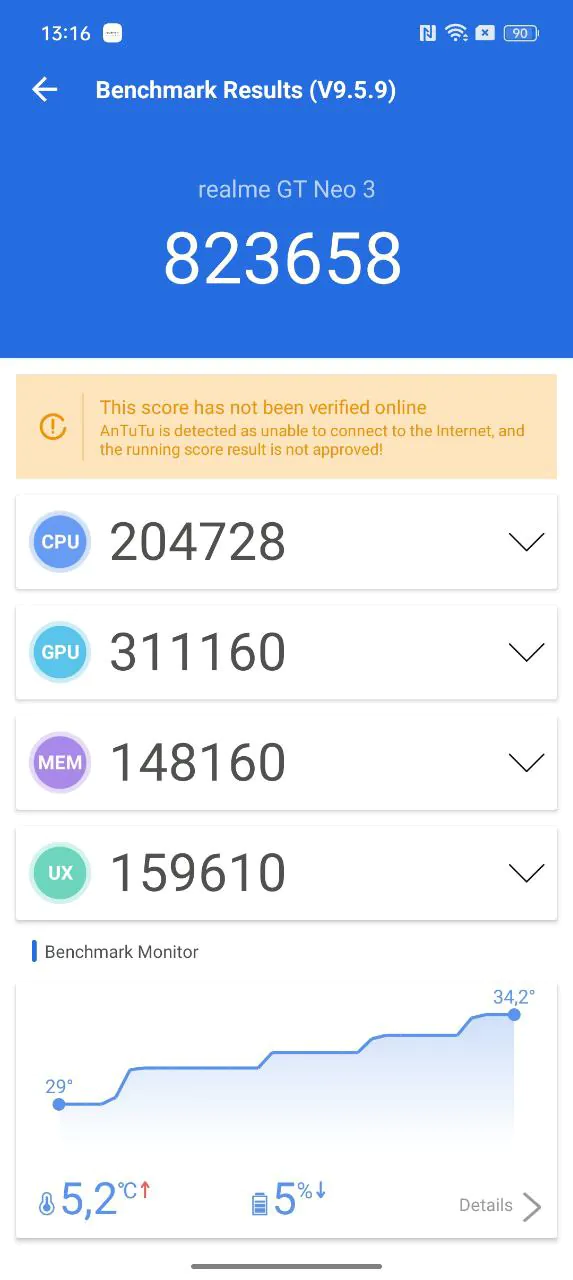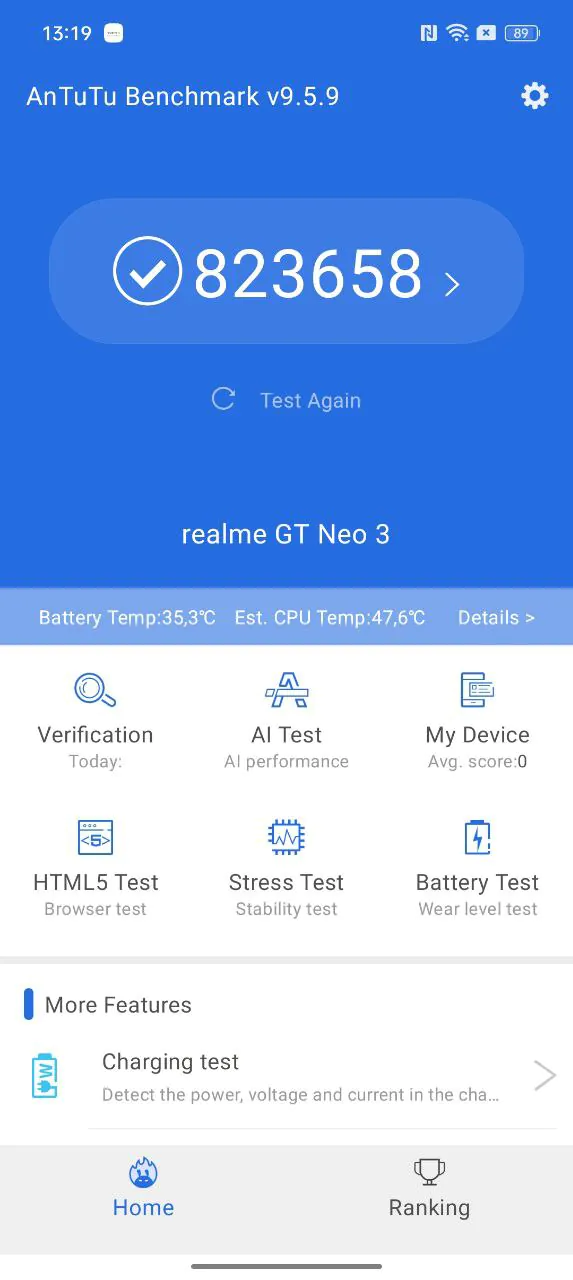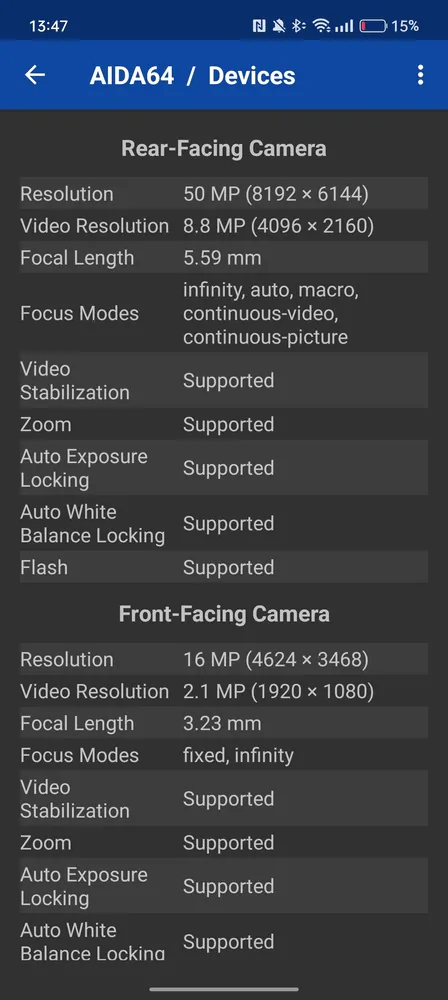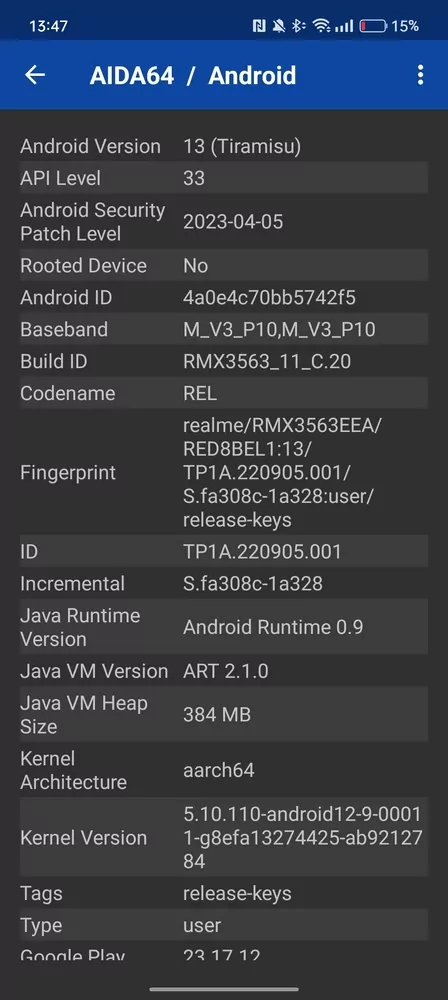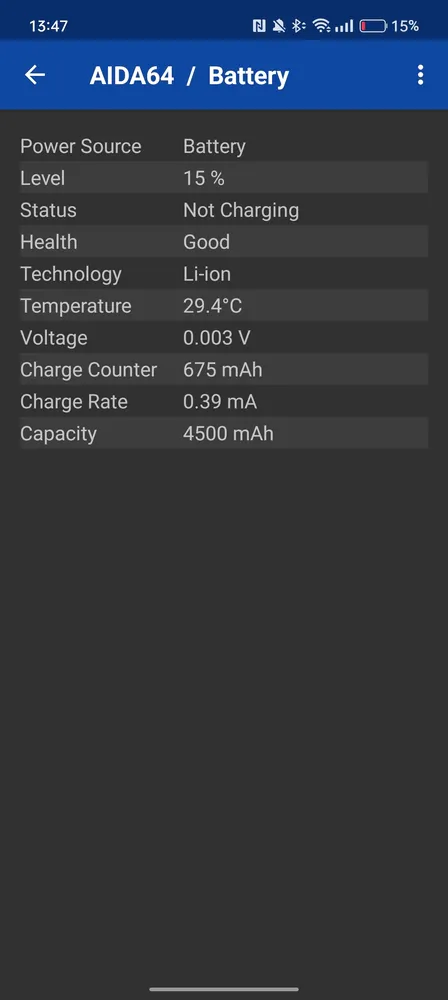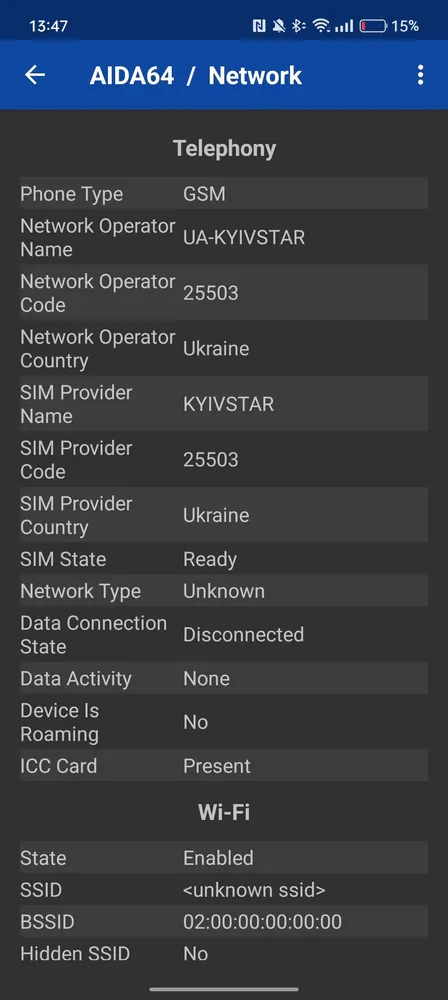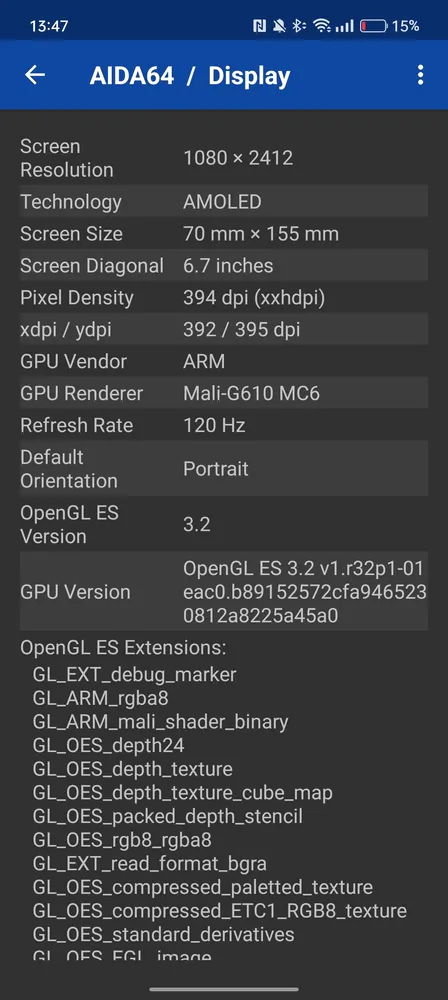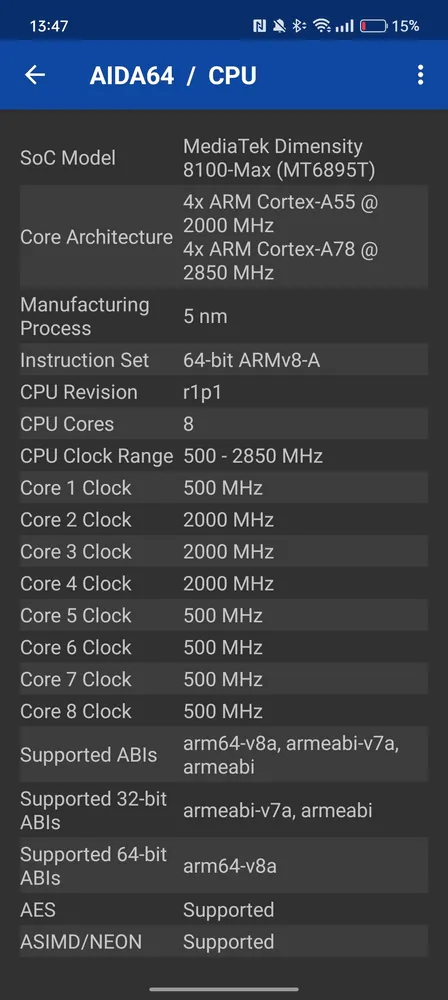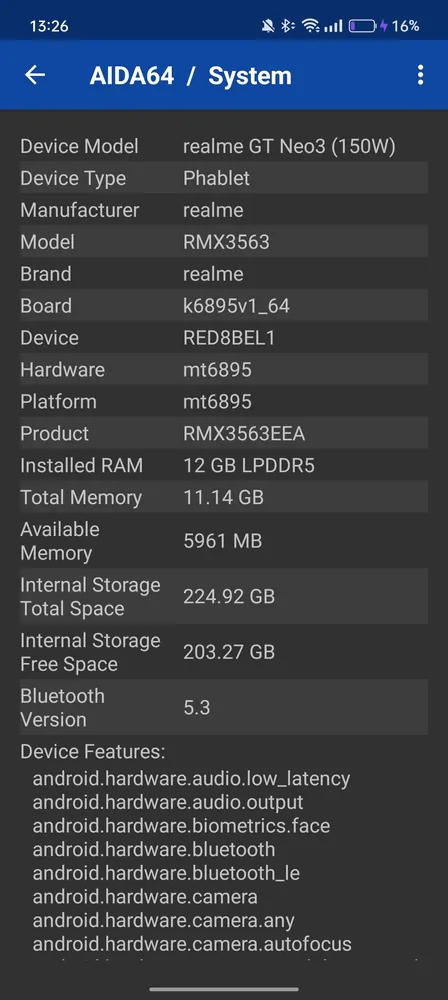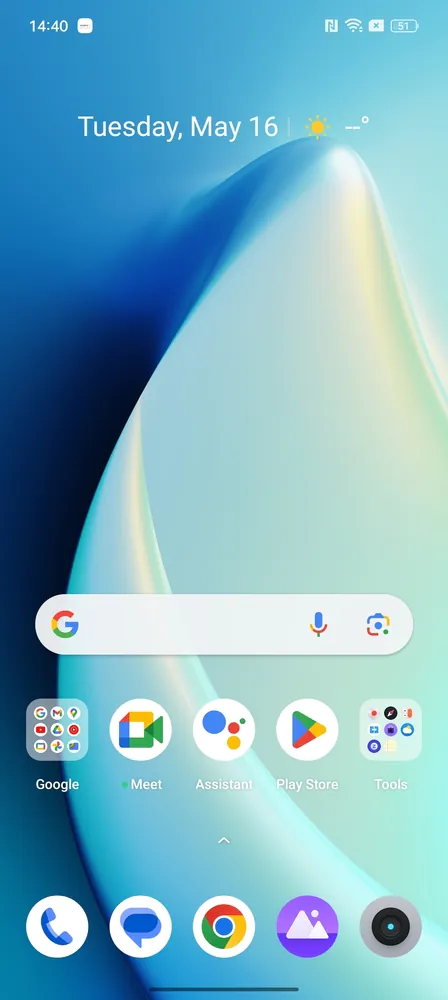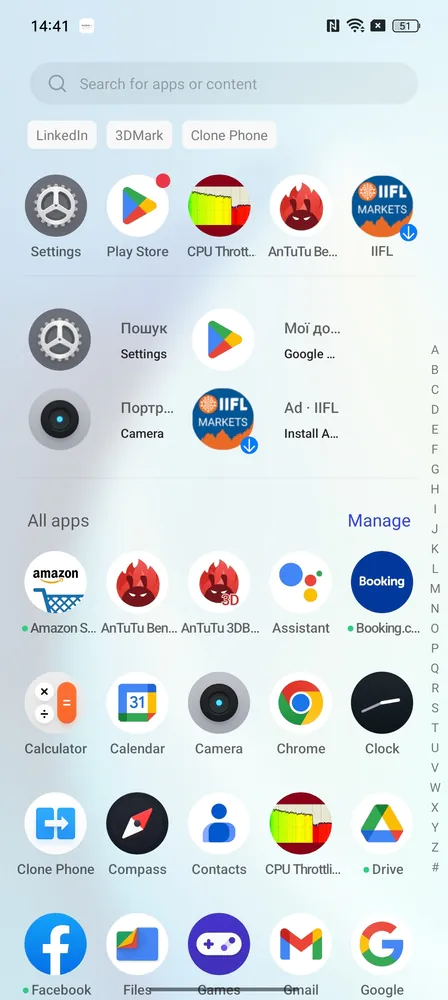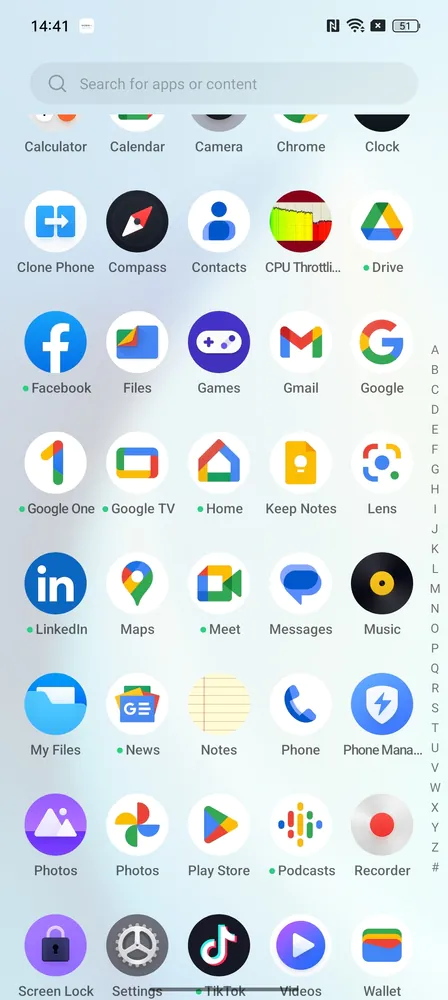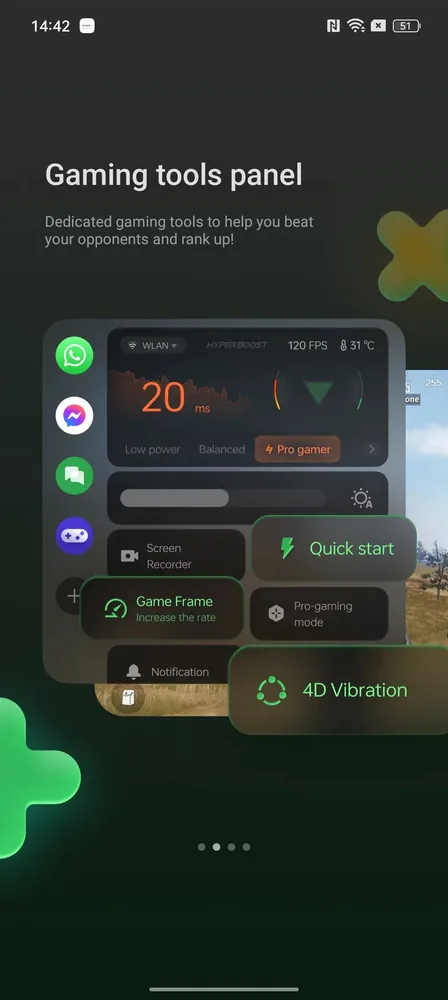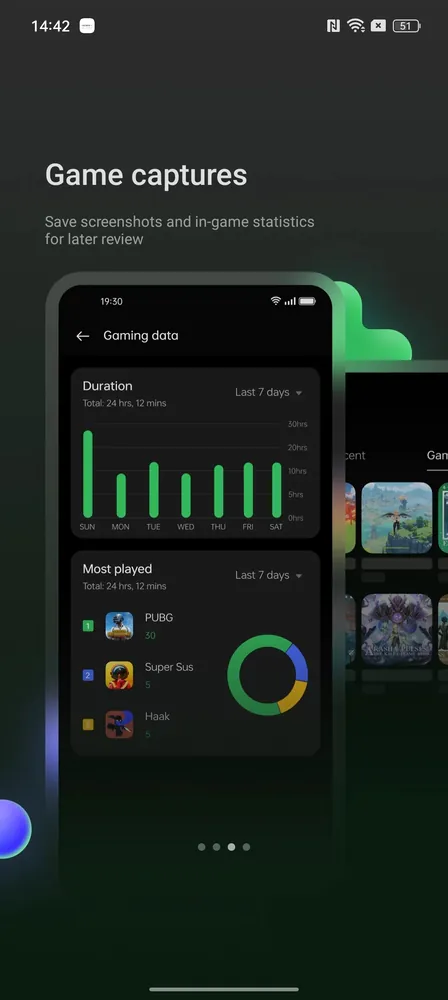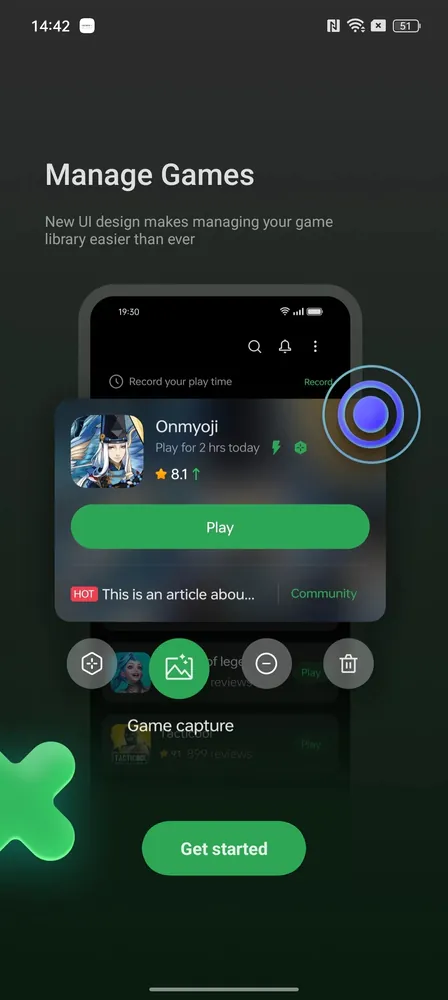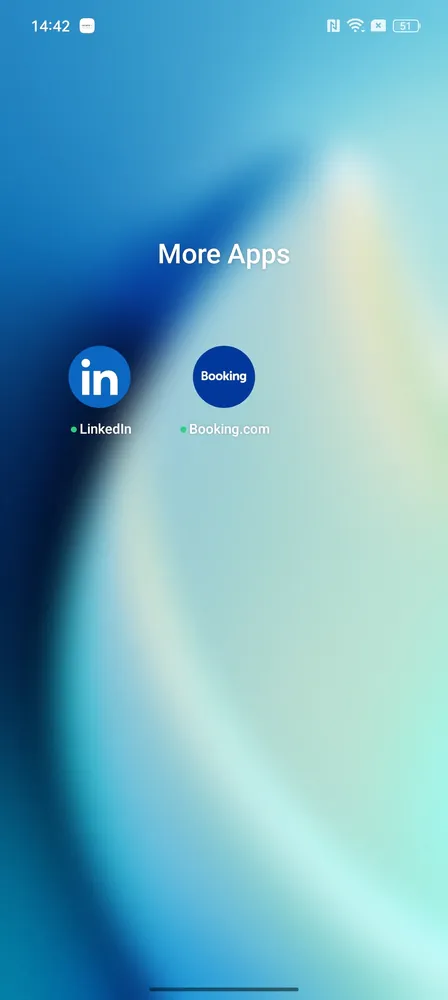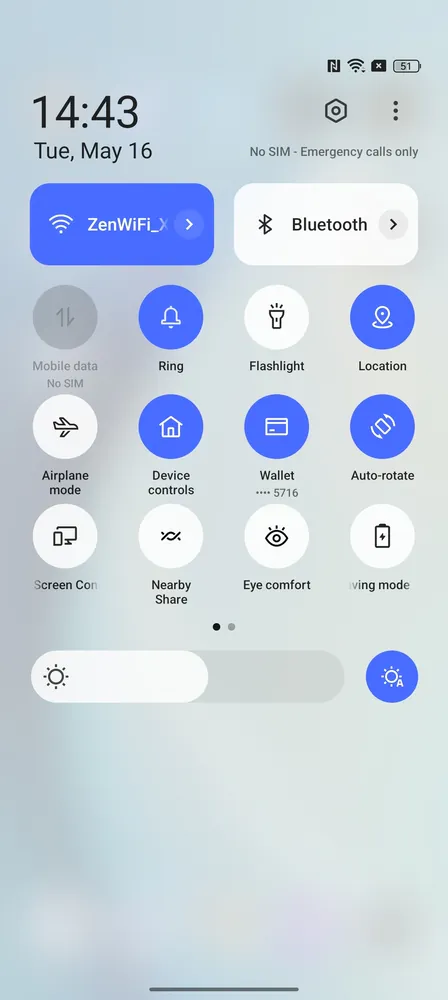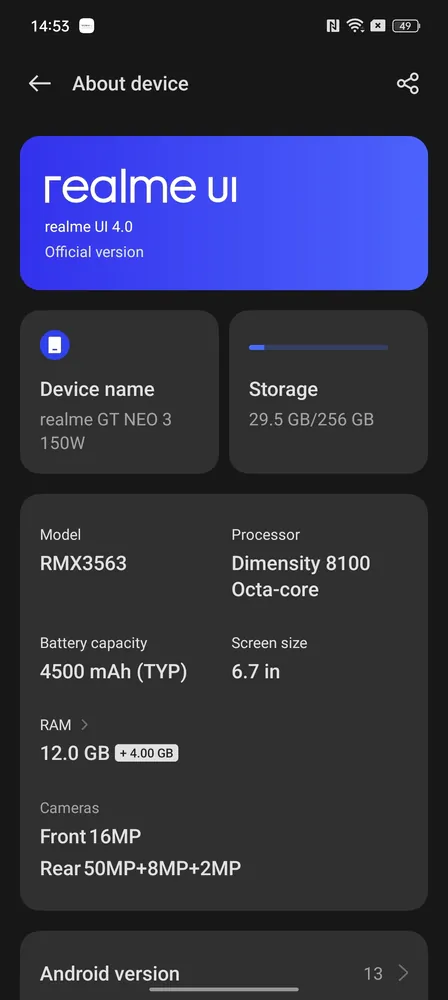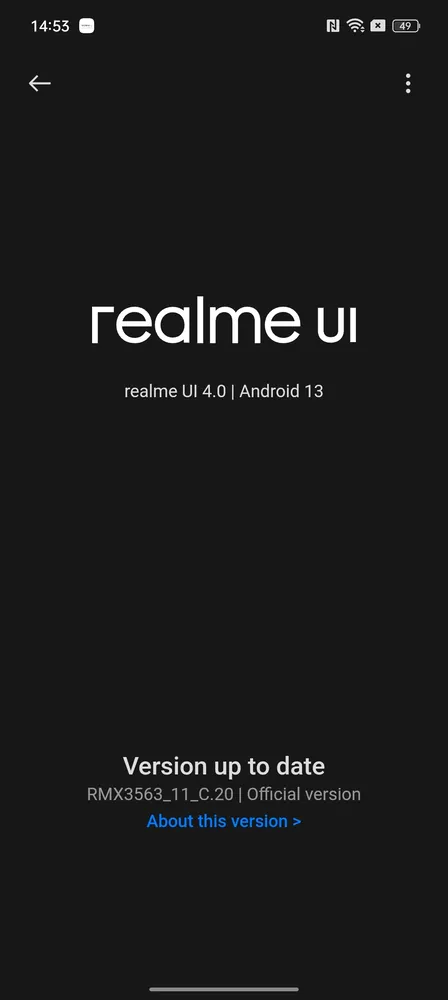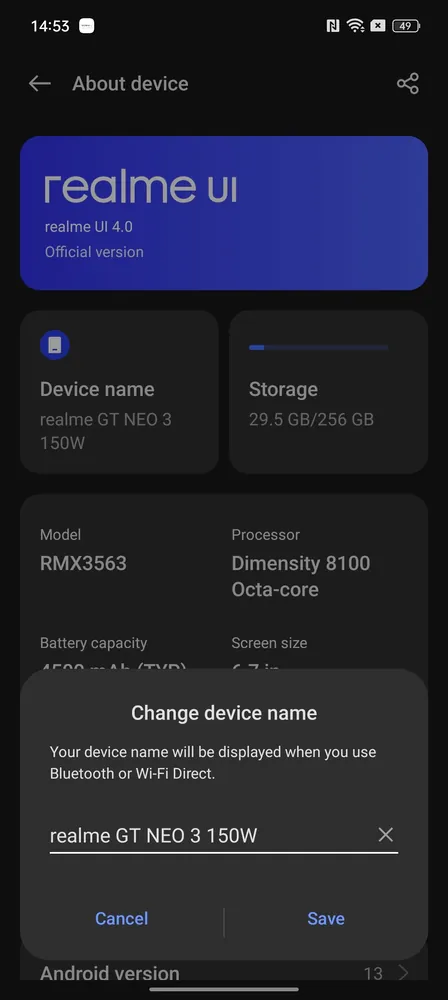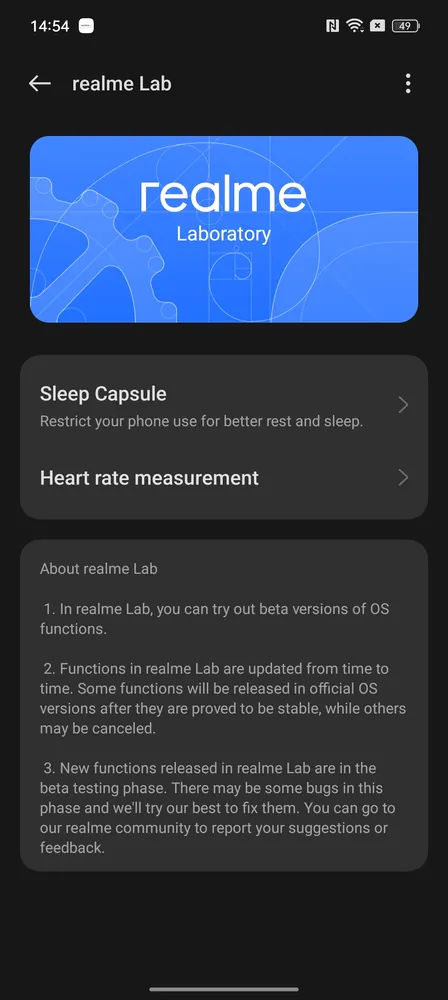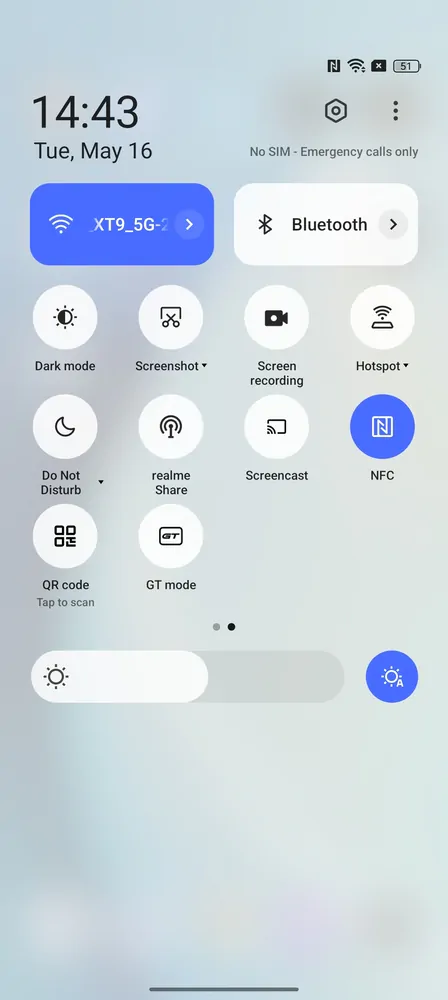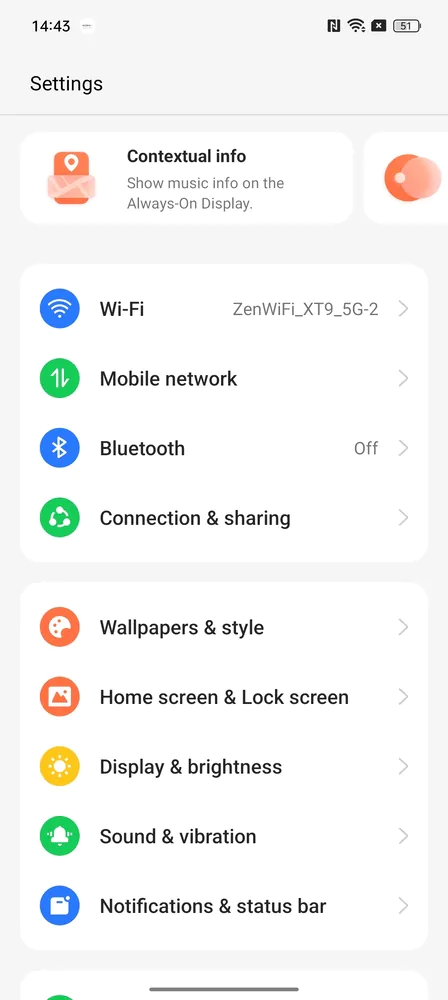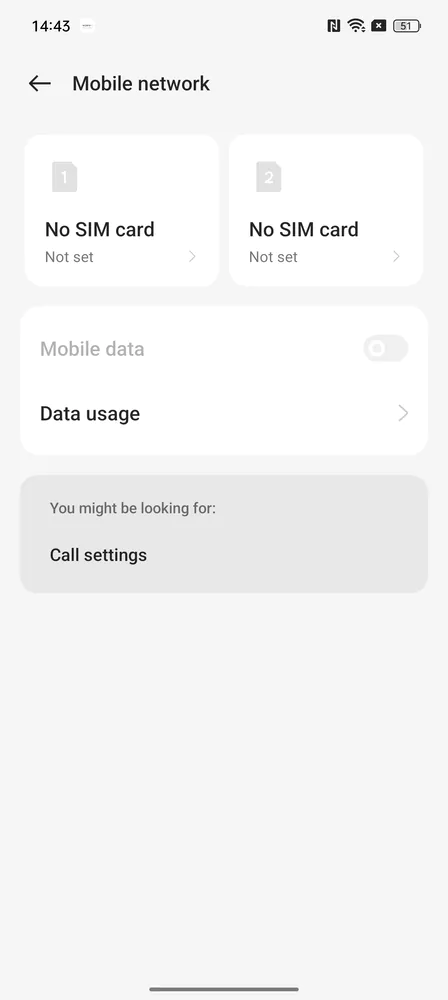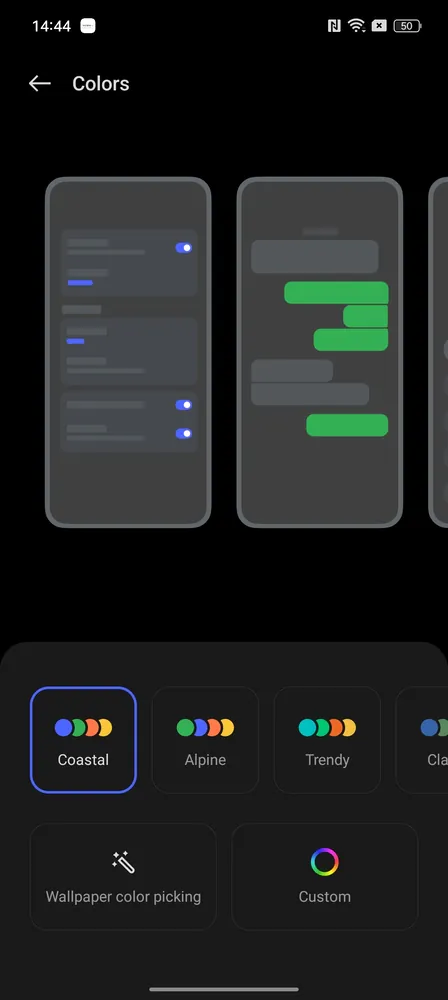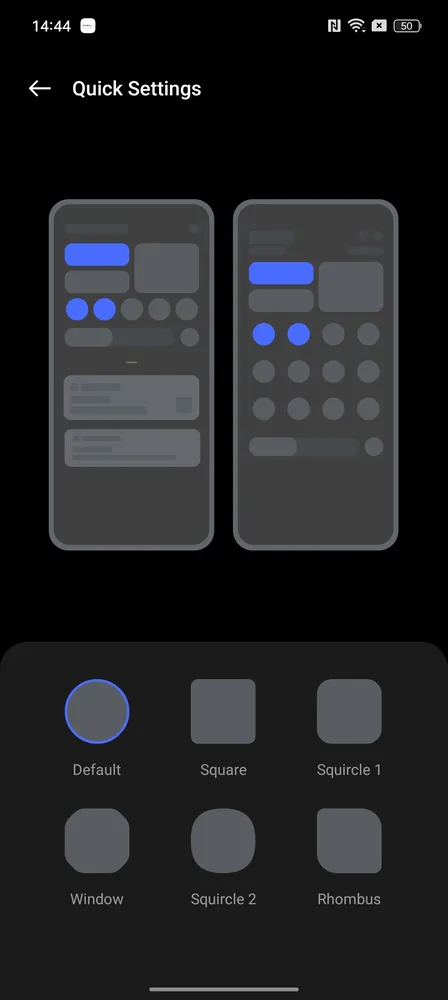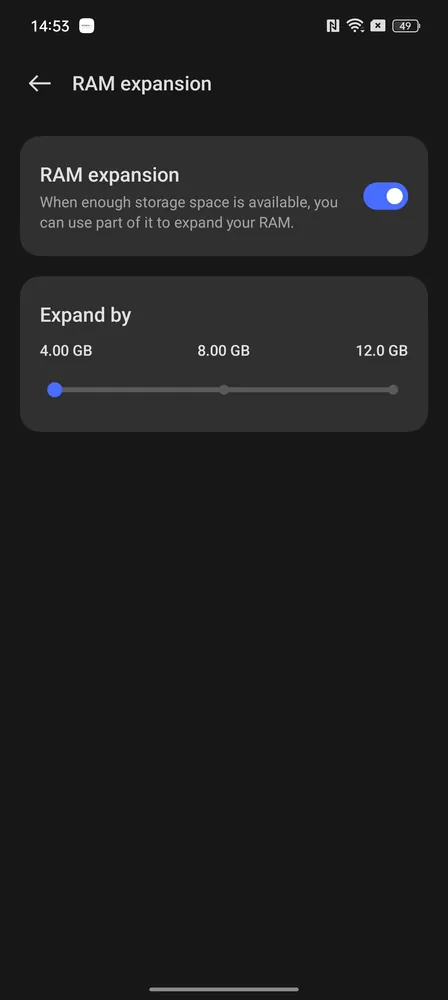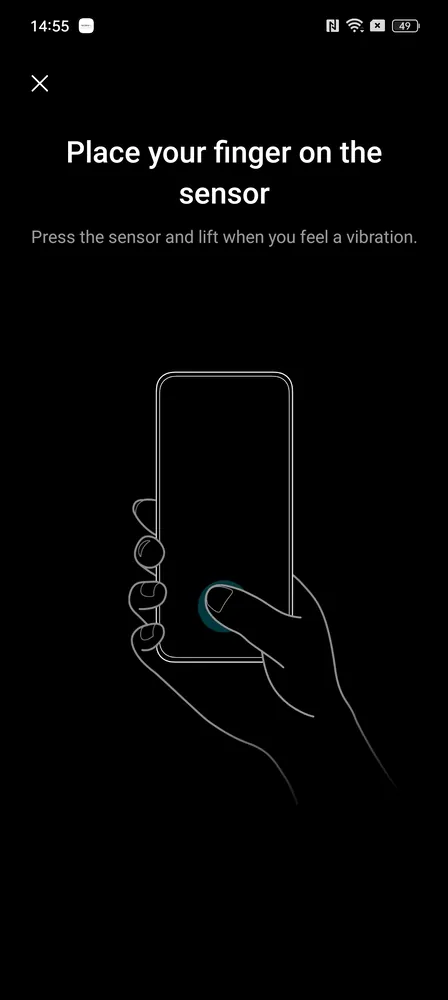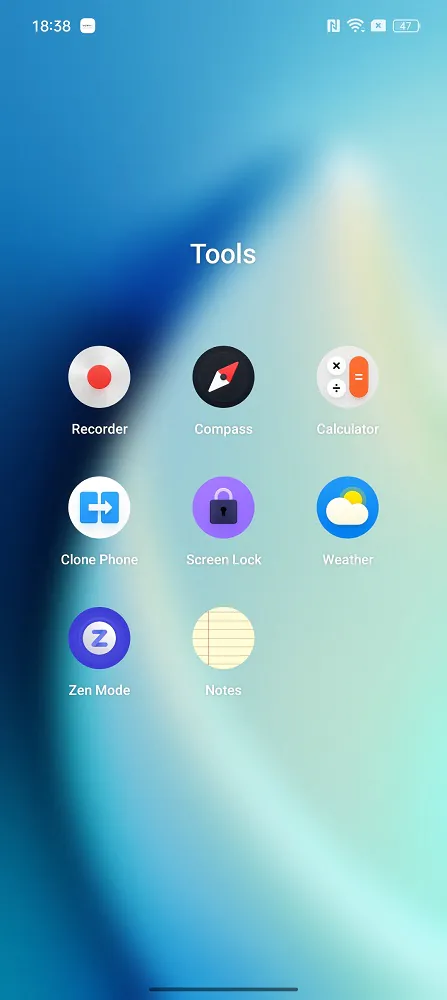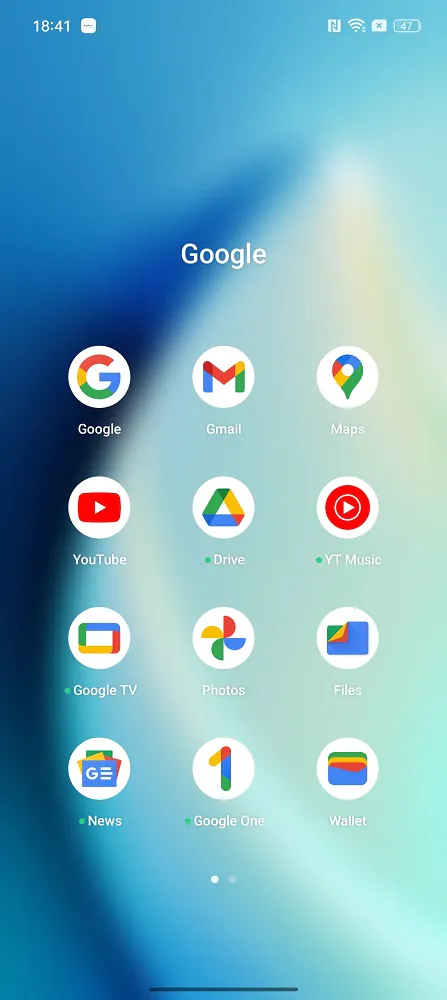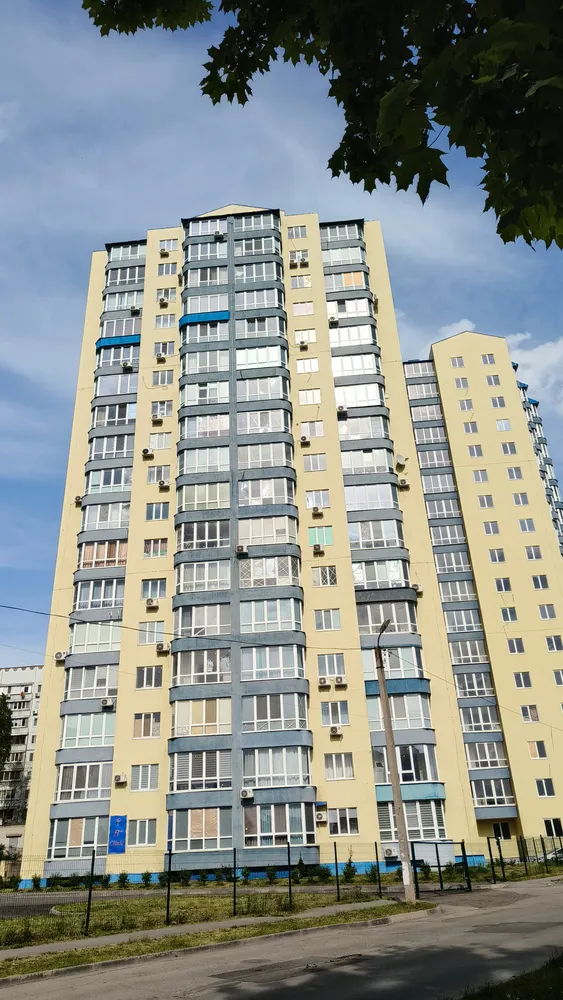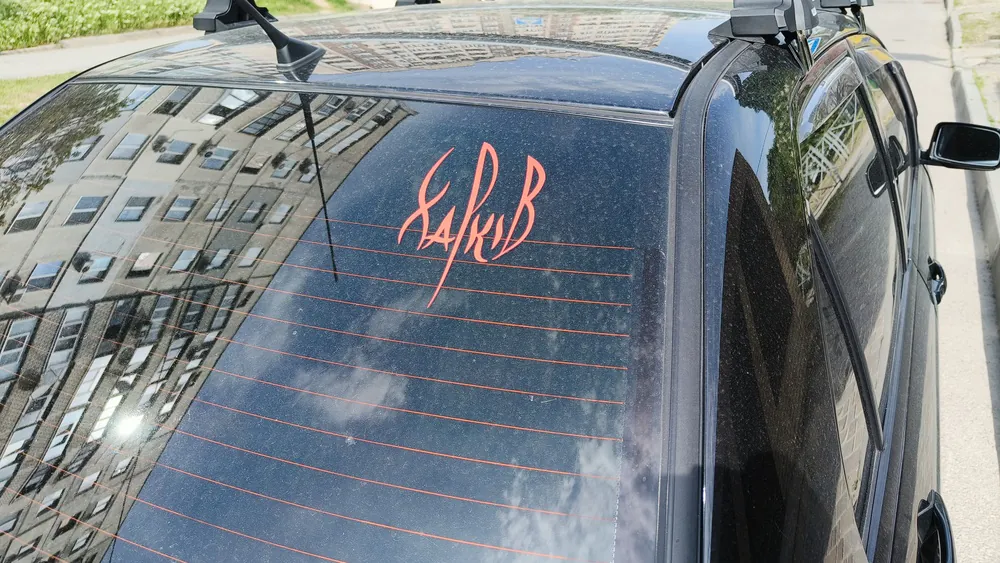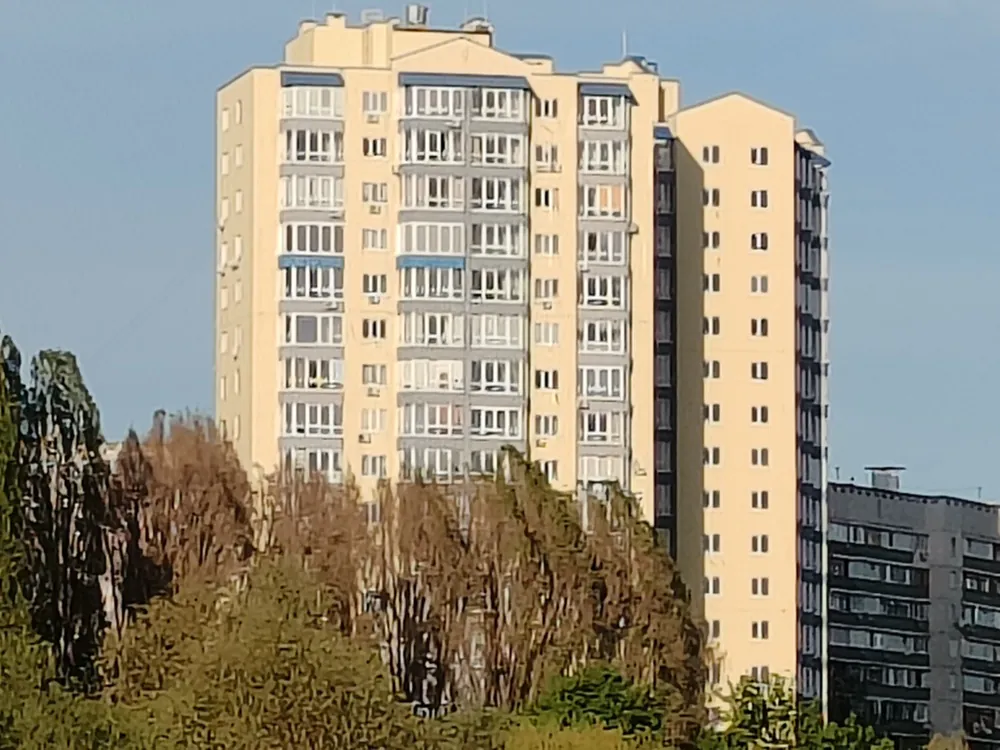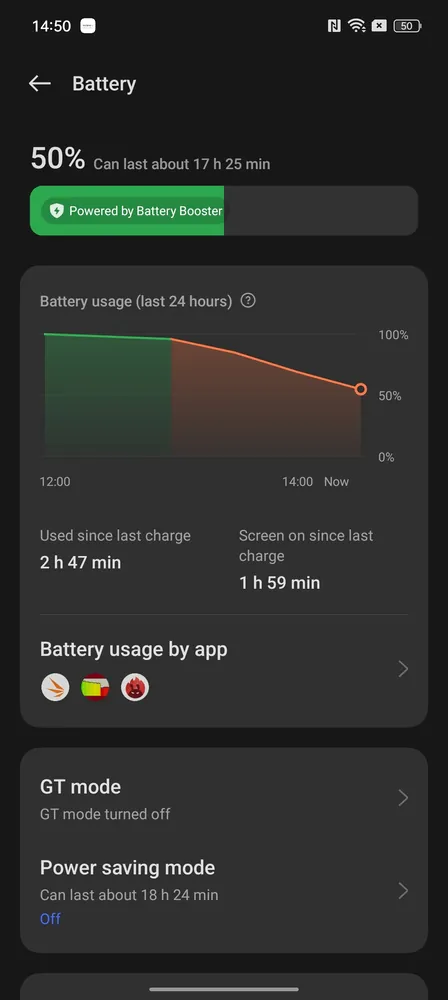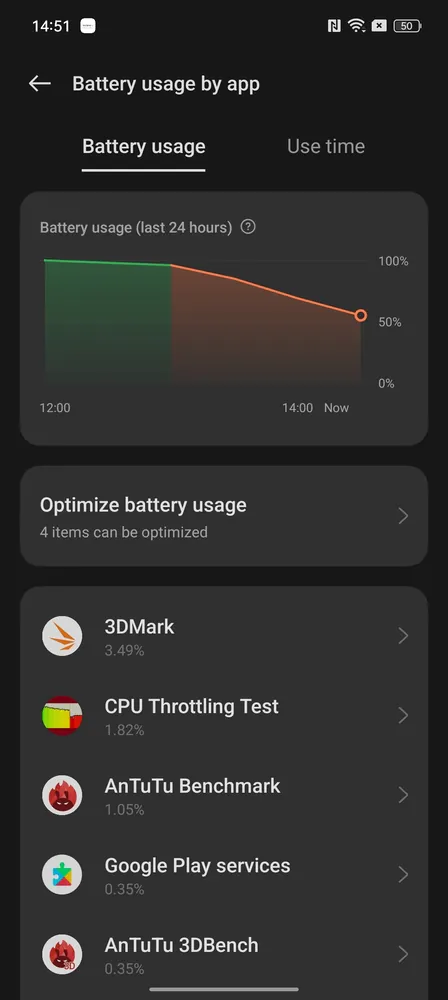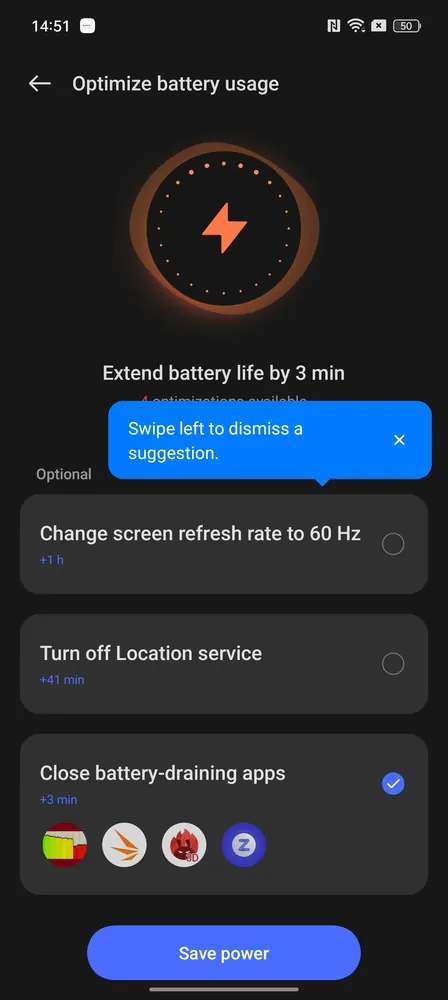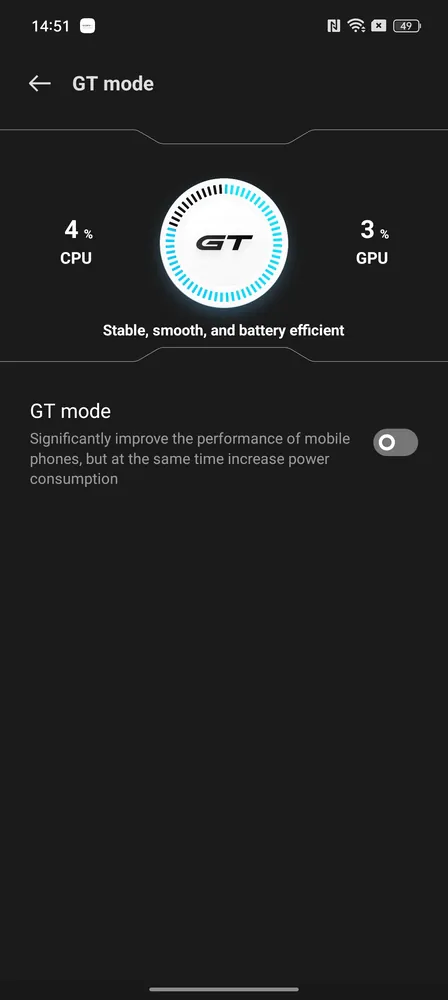© ROOT-NATION.com - Use of content is permitted with a backlink.
A very interesting smartphone, realme GT Neo 3, has appeared on the market. The novelty boasts extremely fast charging, an original appearance, a powerful processor, and a large Super AMOLED display.
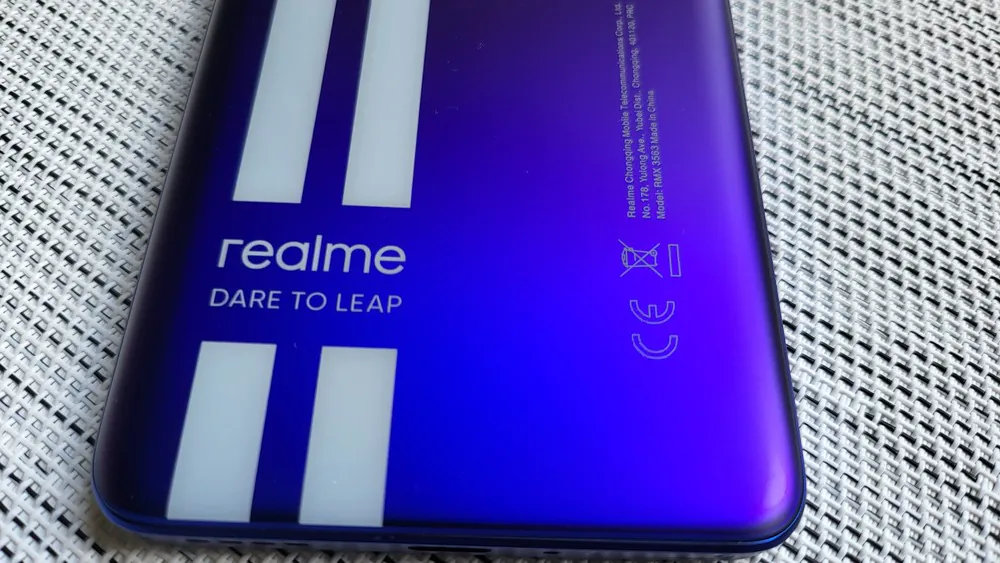
realme is one of the fastest growing brands not only in the domestic market. It owes its success mainly to the application of premium features to affordable devices, but recently it has been increasingly focusing on more equipped models with which it wants to compete with the best while trying to keep its products reasonably priced.
Read also: Realme GT Neo 2 review: Almost a flagship killer
What is interesting about the realme GT Neo 3
The Chinese company realme is a manufacturer that likes to be in the spotlight. This time, it has clearly succeeded with the realme GT Neo 3 model with an unusual back design reminiscent of racing cars. The novelty also boasts a record-breaking 150W charging power, and believe me, you have never seen a smartphone that charges so fast. In addition, it has a top-of-the-line Super AMOLED display and a very good processor from MediaTek. Not to mention the original design that everyone will love.
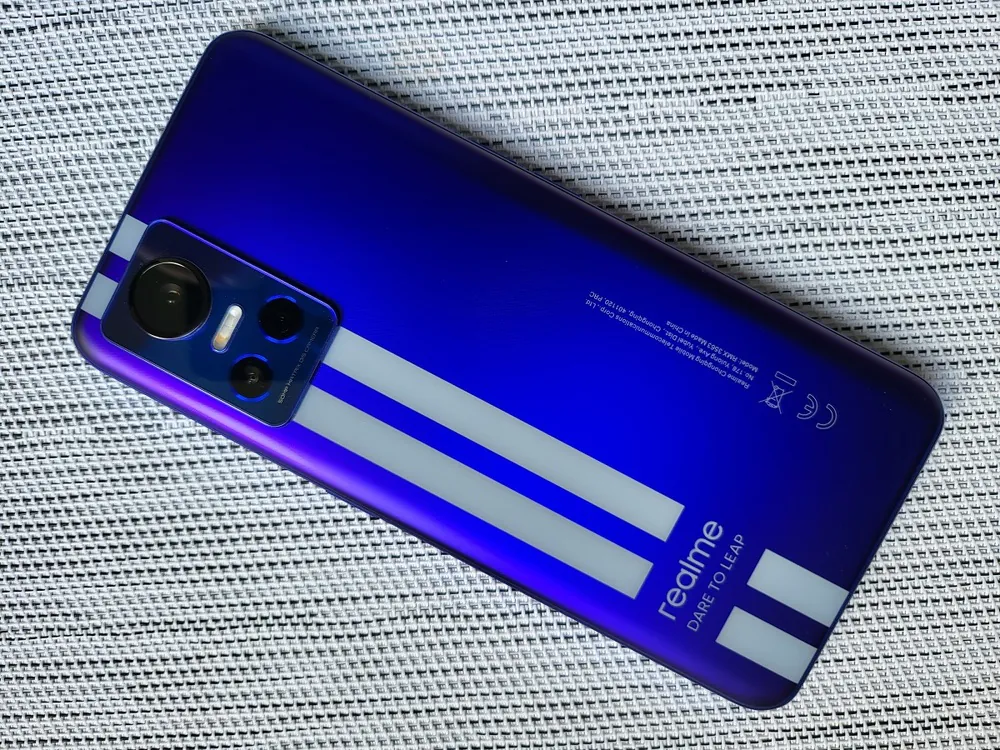
A very interesting, original and modern smartphone that is available in different configurations. It can be the cheapest 6/128 GB variant, the mid-budget 8/128 GB and 8/256 GB, or the most expensive 12/256 GB. In addition, the smartphones are available in three colours: white with black stripes (Sprint White), pure black (Asphalt Black) and blue with white stripes (Nitro Blue). It was the latter colour variant that came to me for review in the maximum 12/256 GB configuration. However, are you ready to pay the recommended price of $500 for this original novelty from realme?
Technical specifications of realme GT Neo 3
Before we start our talk, let’s get acquainted with the technical specifications of the realme GT Neo 3.
- Display: 6.7″, Super AMOLED, FHD+ 2412×1080 pixels, 120 Hz refresh rate, 1000 nits peak brightness, 2 nits minimum
- Chipset: MediaTek Dimensity 8100, 5 nm process, 8 cores (4×2.85 GHz Cortex-A78 + 4×2 GHz Cortex-A55)
- Graphics accelerator: Mali-G610 MC6
- Memory: 6/128, 8/128, 8/256, 12/256 GB
- Data transmission: 5G, LTE 1000 / 150 Mbit/s, Wi-Fi 6, Bluetooth 5.2 (A2DP, LE), GPS, GLONASS, BDS, GALILEO, USB-C 2.0, NFC
- Cameras: Main module – 50 megapixels, f/1.88, 24 mm, 1/1.56″, 1.0 μm, PDAF, OIS, second module – 8 megapixels, wide-angle, f/2.25, 15 mm, 119.7˚, 1/1.4.0″, 1.12 μm, third module – 2 megapixel depth sensor, macro, f/2.4, selfie camera – 16 megapixels, f/2.45, Full HD video, HDR, panorama
- Battery: 4500 mAh, SUPERVOOC 150W charging
- OS: Android 13 with realme UI 4 shell
- Dimensions: 163.3 x 75.6 x 8.2 mm
- Weight: 188 g
According to the technical specifications and functionalities, we are looking at a rather powerful smartphone with an original design. In addition to its appearance and high-end equipment, it attracts attention primarily for its 150W fast charging, which is currently unrivalled. At the same time, the GT Neo 3 has some compromises that more demanding customers may not forgive.
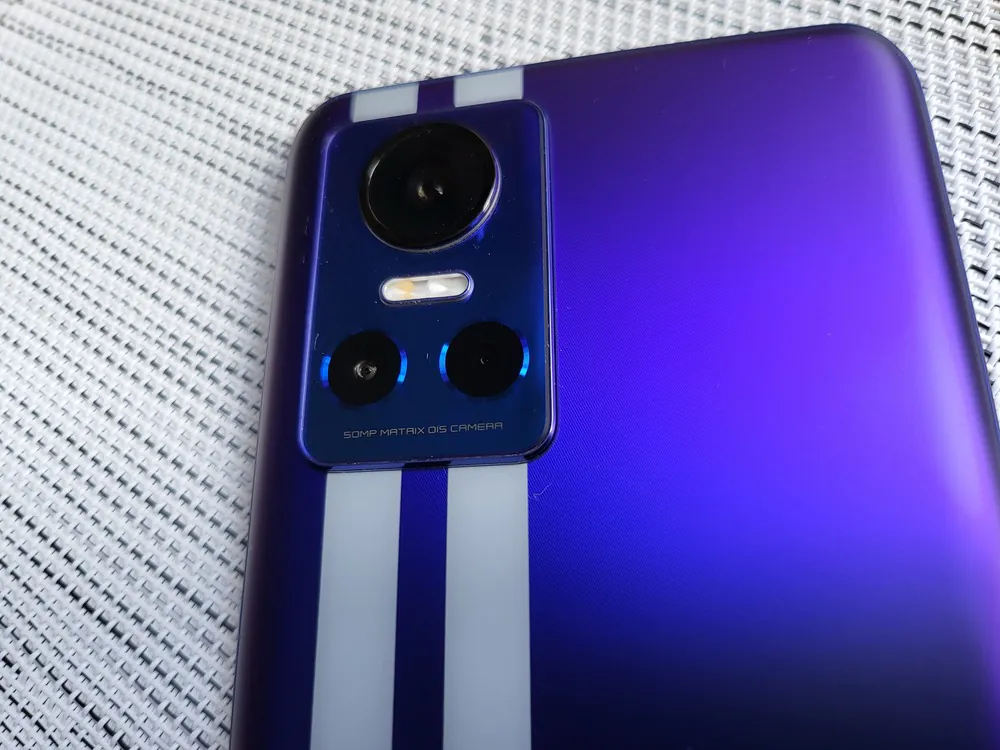
Nevertheless, the realme GT Neo 3 is generally good value for money for an Android smartphone, even if it doesn’t quite match the traditional realme price point.
Despite certain shortcomings, will it be able to attract enough users and withstand competition in the market? Hopefully, our review will provide an answer to this question.
Read also: realme 9i Review: For Whom Is This Budget Phone?
What’s in the package?
The realme GT Neo 3 comes in a sleek black box inspired by the aesthetics of motor racing, which basically highlights the “speed” characteristics that we look forward to experiencing in this new smartphone. Speaking of speed, even just looking at the box, you’ll know that this is a 5G device.
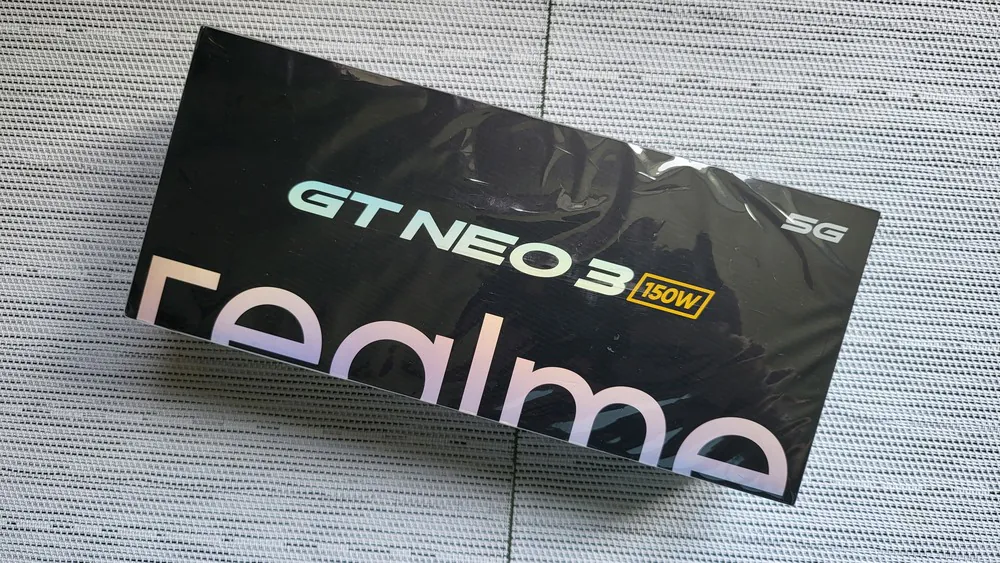
On the back of the box, we can see the main advantages that this smartphone offers, such as support for SuperDart Charge 15W, a Dimensity 8100 5G processor and a Sony IMX766 OIS camera. There is also a configuration with 12GB of RAM + 256GB of storage, like our test device.
Opening the box, we are greeted with a white envelope with an inscription: “Welcome to the realme family”. It contains some documentation: a quick start guide, a safety guide, and a warranty card.
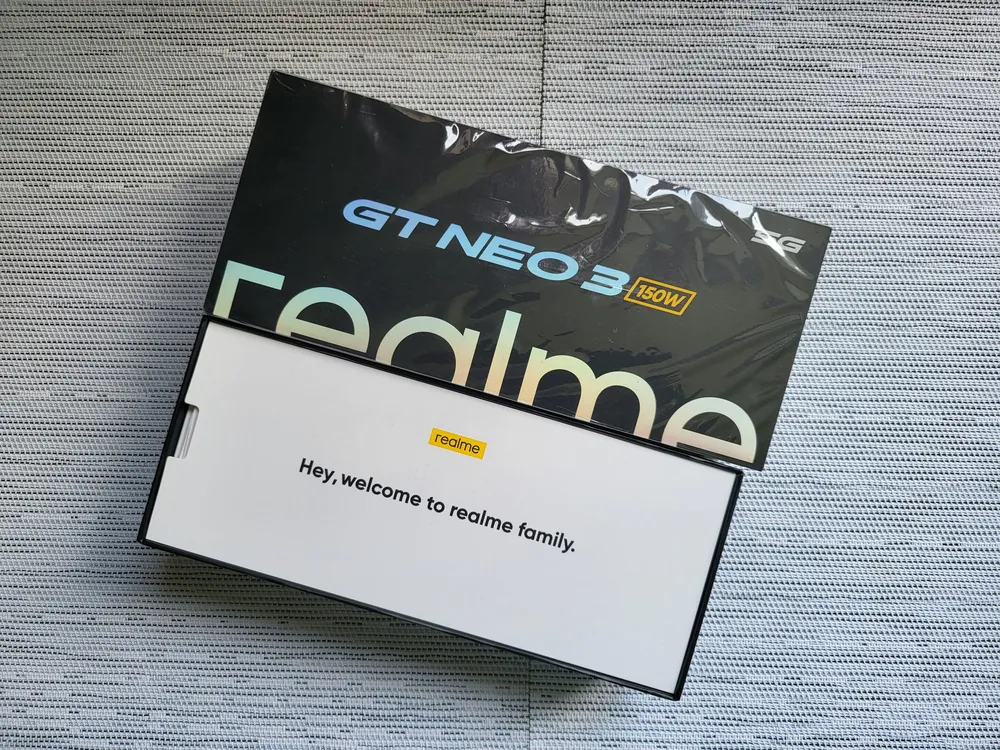 Underneath is the smartphone itself, which is coloured in Nitro Blue for an original and sporty look. It also comes with a pre-installed screen protector.
Underneath is the smartphone itself, which is coloured in Nitro Blue for an original and sporty look. It also comes with a pre-installed screen protector.
Of course, the smartphone also comes in other colours, such as Sprint White and Asphalt Black. There are two compartments on the bottom for a grey transparent protective case, a 150W power supply, a USB Type-C cable, and a paper clip for removing the SIM card.
Read also: Realme 9 Pro review: 120 Hz display and 5G support
Design inspired by Le Mans racing
The appearance of the smartphone attracts almost everyone’s attention at first sight thanks to the Le Mans Blue colour. Although the name says blue, it’s actually more of a blue-violet metallic – depending on the angle of view and light intensity, the colour shifts to one shade or another, which looks quite attractive. Not to mention the two stylish “racing” stripes, which are known to indicate increased performance (at least for cars). To further emphasise the “motorsport” look, the mobile phone appears next to a Shelby car model in the first images.
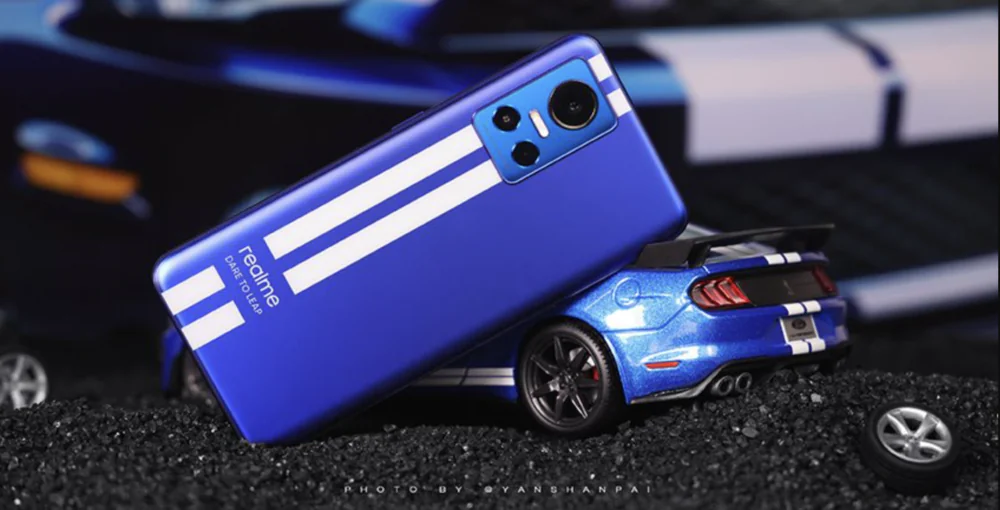
Returning to the device, the smartphone has a glass front and a glass back with a special surface treatment.
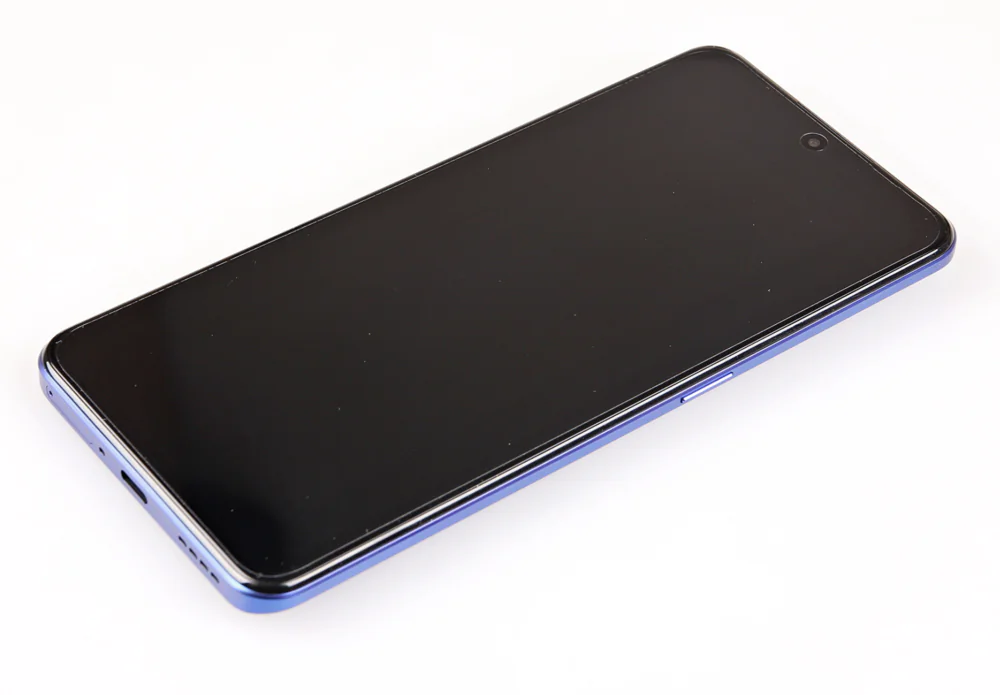
From the front, it looks like any other smartphone, but when you turn it over, you won’t mistake it for anything else. The front side is covered with fifth-generation Gorilla Glass, complemented by a protective film from the factory. The glass does not protrude above the body, the earpiece speaker is hidden in a slot above the display, and the selfie camera is located under the glass in a round hole right in the middle near the top edge of the display.
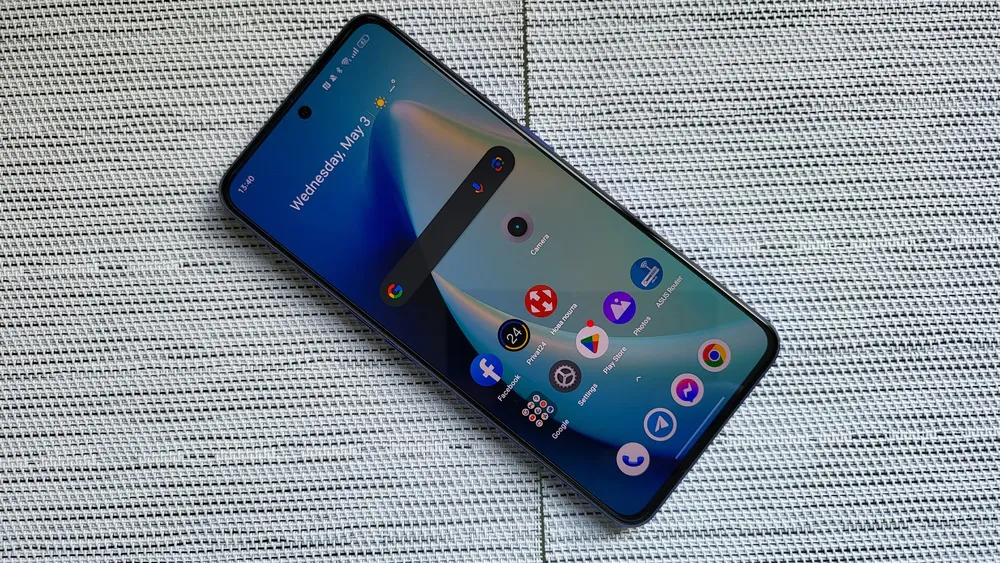
The bezels around the display are minimalist, the side bezels are a little thinner than the other pair. There’s also an optical fingerprint scanner below the display, very fast and accurate, but located too low for my taste.
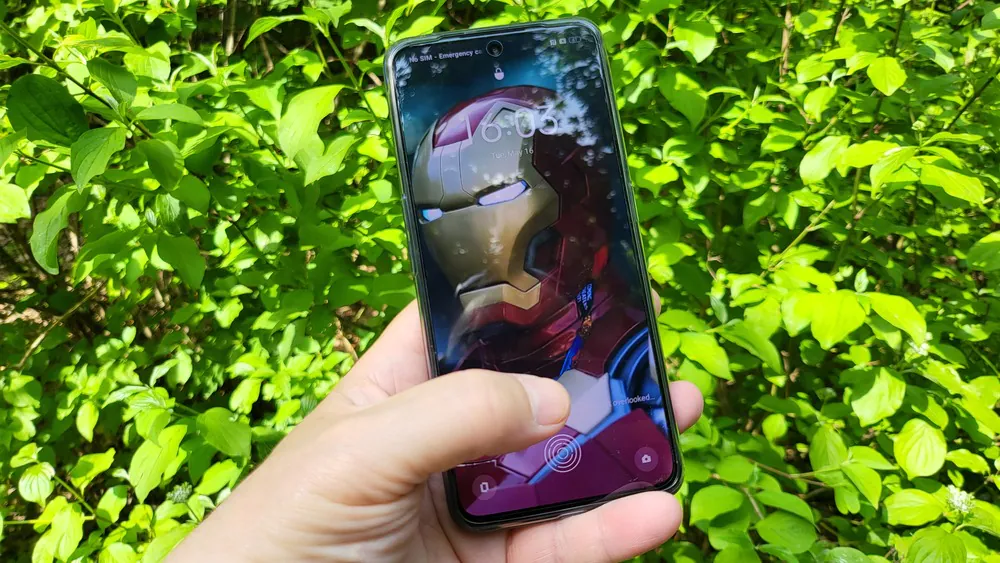
The proximity sensor is adjacent to the right side of the earpiece speaker, and the ambient light sensor is located about 5 mm below, directly below the display. realme GT Neo 3 weighs 188 g with dimensions of 163.3 × 75.6 × 8.2 mm.
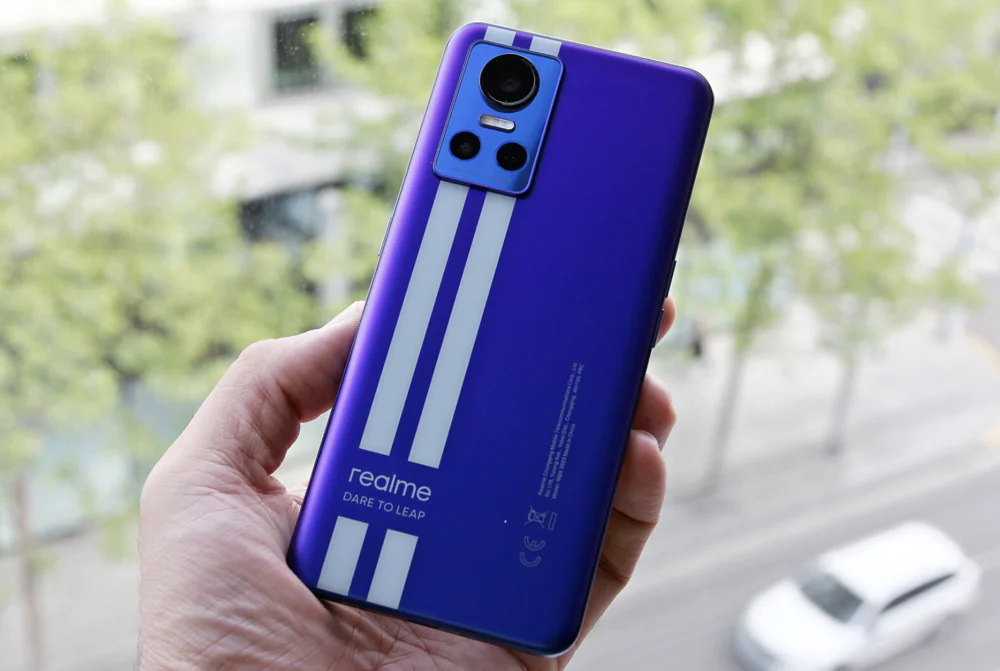
The frame around the perimeter of the device is plastic, but the overall durability of the smartphone is very good. There are no creaks or backlash anywhere. I really liked the arrangement of the buttons, because the lock button is on the right,
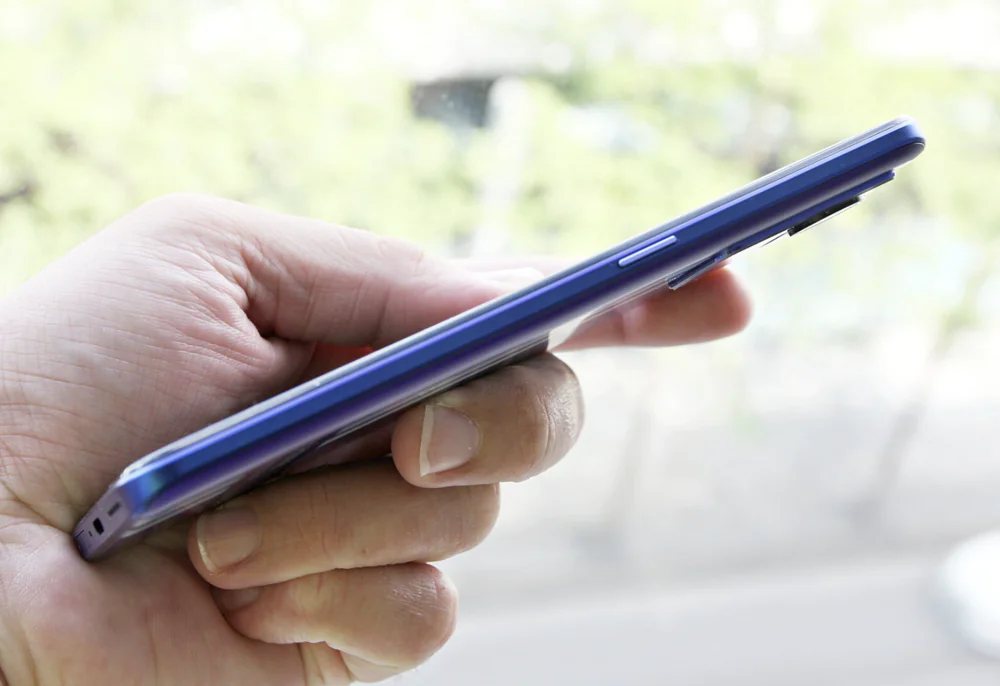
and the individual volume controls on the right, which are positioned at a very easy-to-use height.
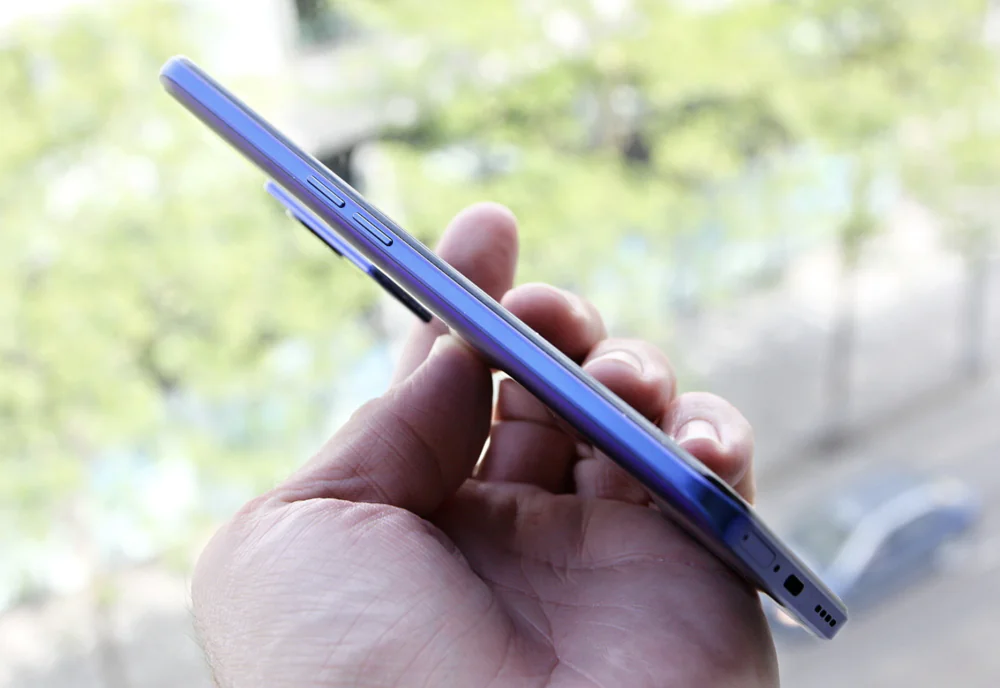 On the top edge, we find an additional microphone and a second speaker that works in stereo tandem.
On the top edge, we find an additional microphone and a second speaker that works in stereo tandem.
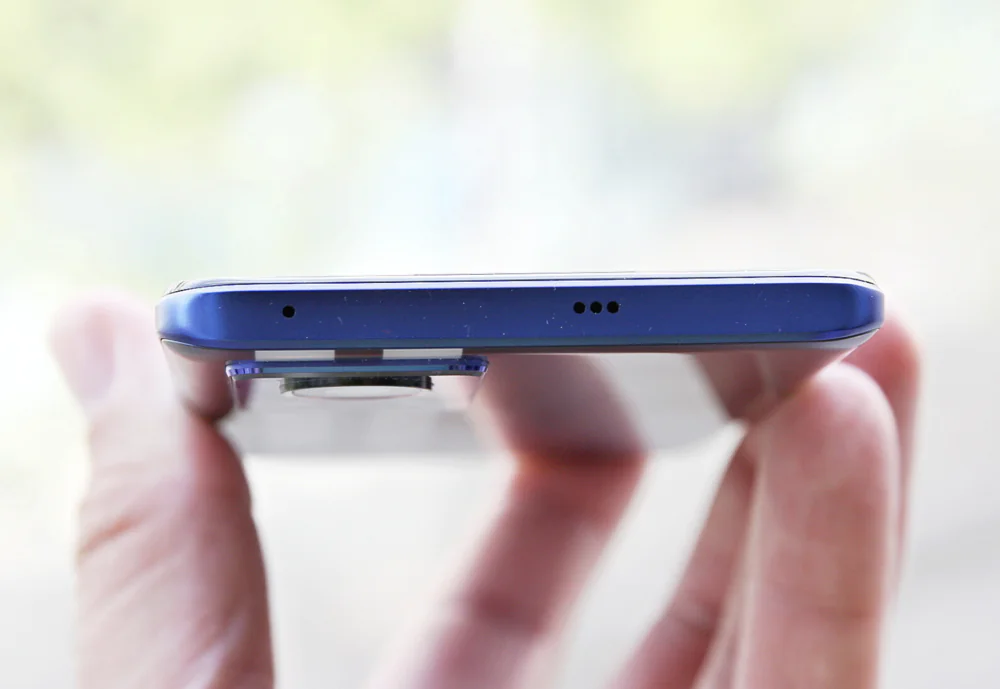 The bottom has a microphone for calls, a main speaker, a USB Type-C connector and a tray for a pair of nanoSIM cards.
The bottom has a microphone for calls, a main speaker, a USB Type-C connector and a tray for a pair of nanoSIM cards.
All openings on the device case are hidden on the top and bottom edges. We are especially pleased with the stereo speakers, which sound quite good because they are not just powerful loudspeakers.
The back side is made of special Gorilla Glass 5 glass, and in our blue version it is almost impossible to see fingerprints on it.
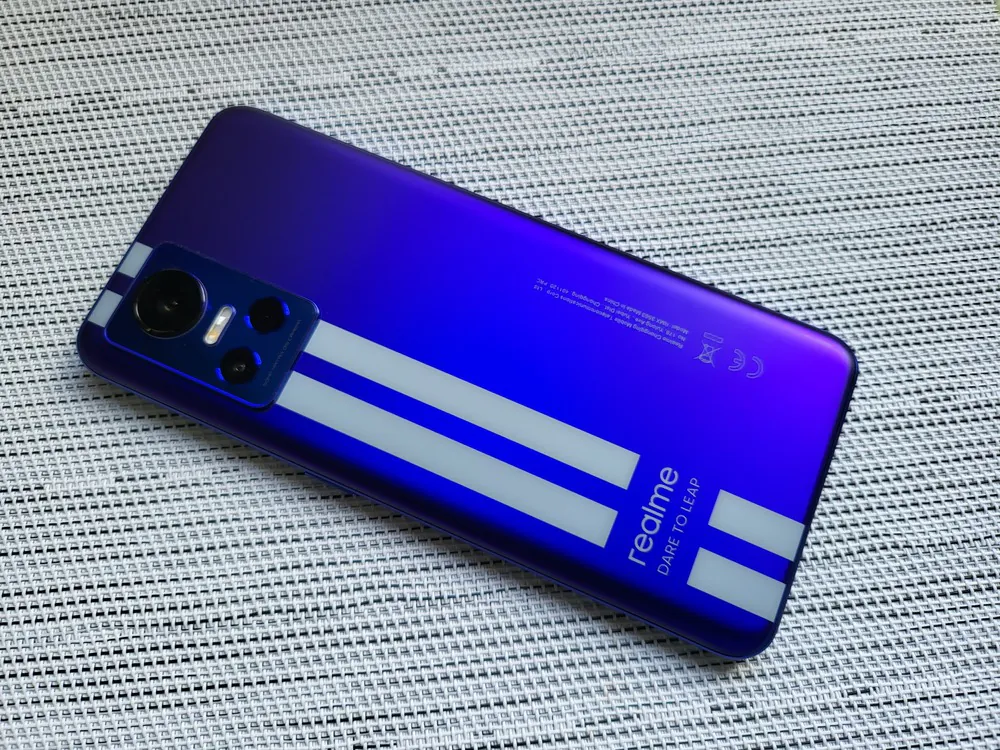 In addition to a pair of white stripes indicating speed (at least when charging), you can also see the realme logo glowing bright white, the Dare to leap slogan and other technical information (which really spoils the impression). Although I have a very pleasant impression of the back surface itself.
In addition to a pair of white stripes indicating speed (at least when charging), you can also see the realme logo glowing bright white, the Dare to leap slogan and other technical information (which really spoils the impression). Although I have a very pleasant impression of the back surface itself.
In the upper left corner is the photo module, which contains a large and slightly more protruding main camera lens, two smaller lenses and a two-colour LED flash, as well as information about the main camera resolution, sensors and the presence of optical stabilisation and artificial intelligence on board.
An interesting feature of the realme GT Neo 3 is the so-called 360° NFC, because, thanks to the presence of several NFC antennas on the body, the smartphone can be held on any side. That is, it doesn’t matter whether you put the mobile phone to the terminal from the back, sides or display. I was also pleased with the presence of stereo speakers, which, by the way, sound quite good, more on that below. On the other hand, what I miss is the lack of wireless charging. Although the presence of ultra-fast charging, thanks to which you can charge your smartphone from 0% to 100% in just 15 minutes, levels this trouble.
However, the company makes no mention of whether their device has at least some degree of IP XX protection certification. In this regard, the realme GT Neo 3 is almost alone for such a high price. The vast majority of similarly expensive phones tend to have increased protection.
The finish of the phone seems solid, there are no complaints in this regard. The smartphone feels good in the hand, but the back can be a bit slippery. Fortunately, this can be solved with the included silicone case.
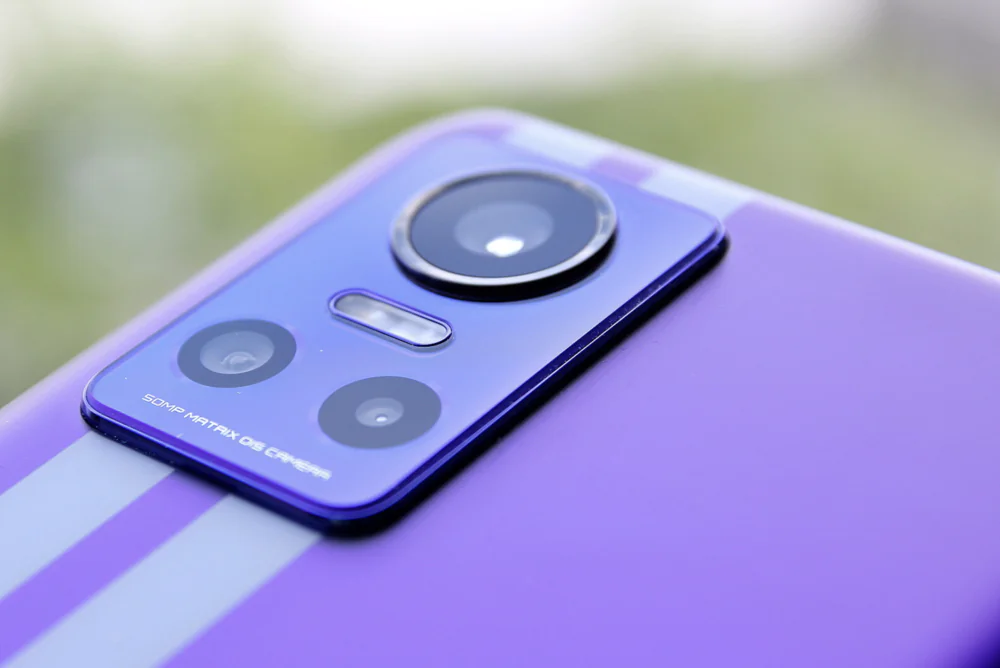
However, what you won’t be able to remove with the case is some wobble when placing the smartphone on a flat surface, as the body is slightly raised in the camera area.
Read also: realme 9 4G review: Midranger with 108MP camera and 90Hz screen
Realme GT Neo 3 display: AMOLED, HDR 10+, 120 Hz
But where the company really exceeded my expectations from the tested smartphone was the display.
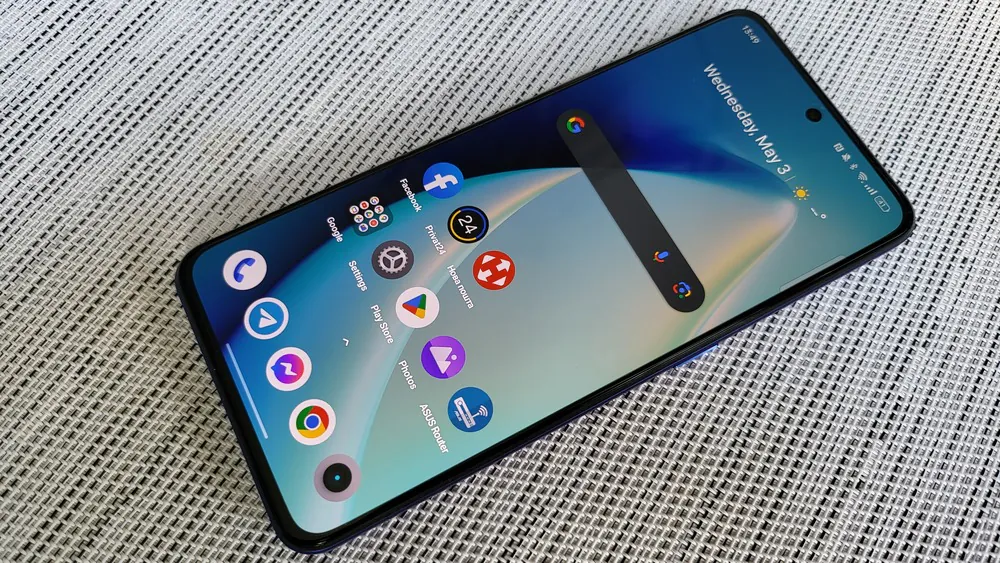
The realme GT Neo 3 features a 6.7-inch AMOLED panel with a resolution of 1080×2412 pixels (394 PPI accuracy), a maximum brightness of 1000 nits and Corning Gorilla Glass 5. The display offers a contrast ratio of 50,000,000:1, supports DCI-P3 colour gamut, JNCD colour deviation is 0.4, the display will display 1.07 billion colours, and the display area occupies 94.2% of the front side. Of course, we should mention the maximum refresh rate of 120 Hz for faster display operation. The refresh rate is not flexible because the panel is not LTPO, but this feature enhances the display experience on several levels.
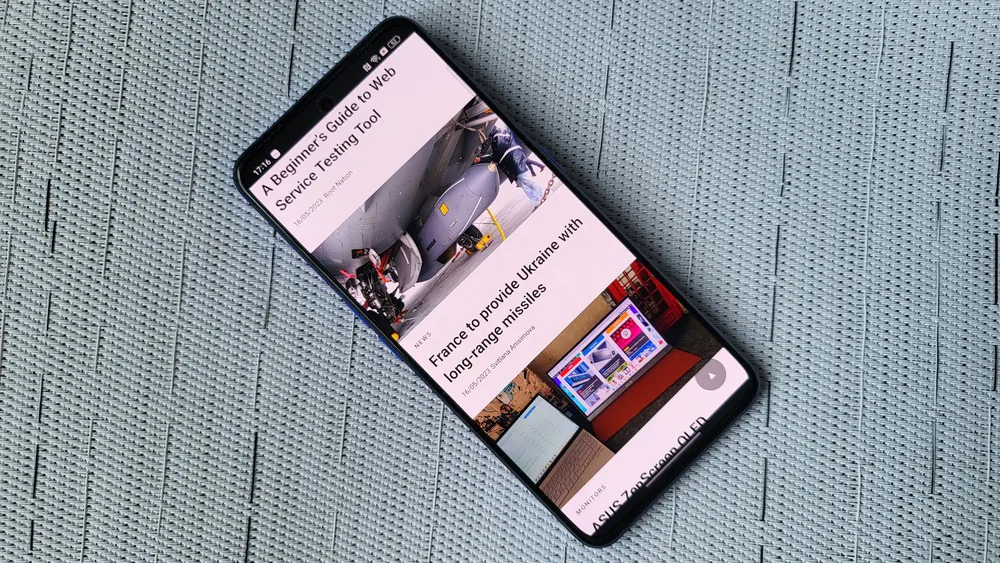
It’s a display with great colours and rich blacks, with good readability in the sun and an exemplary brightness range, with perhaps only the auto-adjustment sometimes being a little delayed.
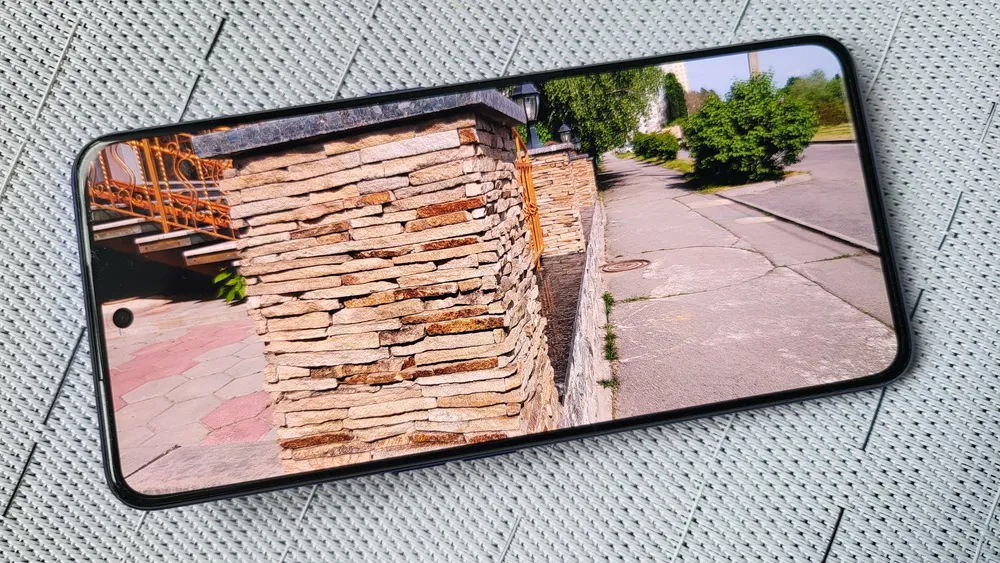 As usual with a smartphone with an AMOLED display, the first thing I did here was to activate the dark mode, which can be activated temporarily or permanently, and also affects the wallpaper, icons and other elements in the environment.
As usual with a smartphone with an AMOLED display, the first thing I did here was to activate the dark mode, which can be activated temporarily or permanently, and also affects the wallpaper, icons and other elements in the environment.
There’s a scheduleable blue light filtering mode, a choice of three display sizes and five font sizes, and a choice between cool/default/warm colour rendering mode, as well as a choice between bright, natural, or professional mode. In addition, the display can be turned up to even higher brightness levels when playing HDR video.
Of course, we haven’t forgotten about the very useful Always on display feature. You can choose whether it should be displayed continuously, on a schedule, or only when the phone is moving. Here, it’s a more advanced option that displays not only the time and date, but also the battery level and all incoming notifications, but you can’t respond to them directly. You can choose your own watch style or a simple image.
In addition to the above, the customisation section includes wallpaper selection, icon style, shape and size, control panel colours, fingerprint scanning animation, the shape of the display edge effects, and finally the shape of the shortcuts in the Quick Settings panel.
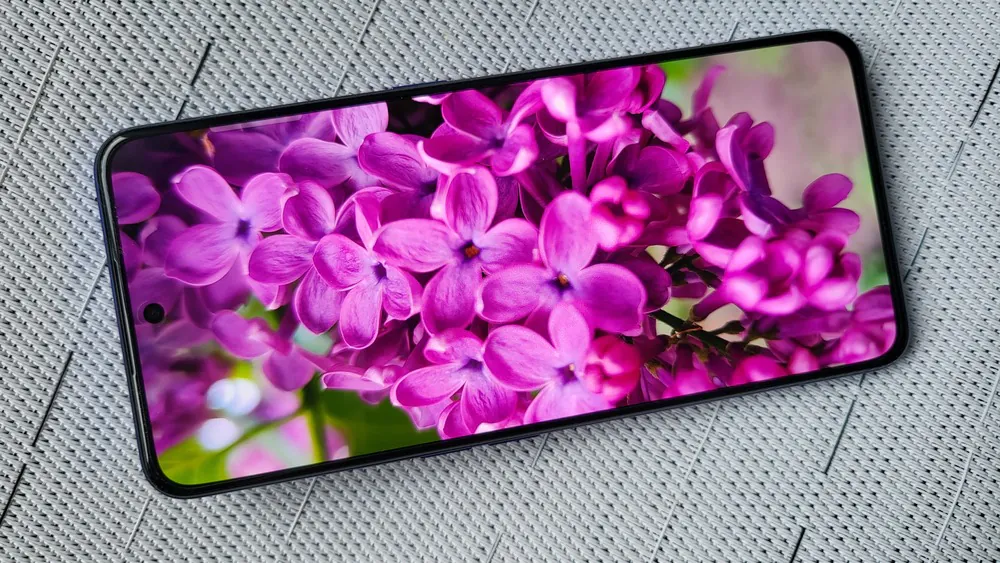
Overall, the display quality is excellent, which is exactly what we expected from a realme OLED panel. Viewing angles are great, images and texts are very vivid. The panel is bright enough to be used outdoors, although it is perhaps a little less bright than some flagship-level displays.
Sound: stereo of course
In terms of sound, the smartphone is quite good, there are two speakers, it’s nice to listen to music or watch videos. Perhaps I should mention minimal distortion when the volume is turned up, but this did not significantly affect my impressions of the speakers. By the way, both have equivalent performance, plus support for Dolby Atmos and Hi-Res Audio. On the other hand, as expected, there is no 3.5 mm jack, so it’s better to listen to music with wireless headphones.
During a call, the microphone and speaker do an excellent job. Everything is audible, loud enough, and there are no extraneous sounds or distortions.
Read also: Realme Pad X Review: An Extraordinary Tablet
High-speed racing lane
These are the words I would use to describe the performance of the realme GT Neo 3. It runs on the MediaTek Dimensity 8100 5G chipset, manufactured on 5 nm technology, which has eight cores (4×Cortex-A78 2.85 GHz + 4×Cortex-A55 2 GHz) and a Mali-G610 graphics accelerator. I received the realme GT Neo 3 configuration, which has a maximum of 12 GB of RAM and up to 7 GB of storage that can be virtualised. This “racer” definitely has no problems with a lack of power, the tuning is perfect.
I was interested in the top-end processor from MediaTek. I wanted to see how it would behave during synthetic tests. And I was very pleasantly surprised. Yes, it’s not a flagship chipset, but it’s definitely not lagging behind. The tests prove exactly that.
The 256GB of internal storage is not expandable and will use less than 30GB at launch, so there’s plenty of room for your photos and videos. It’s also worth noting that this phone doesn’t support microSD, which means it’s ideal if you choose the largest memory option for your device. Let me remind you that the realme GT Neo 3 comes with only two storage options – 128GB and 256GB.
In our real-world test, the realme GT Neo 3 was powerful enough to run my favourite gaming apps. I ran Mobile Legends all day long without any problems. When it came to Genshin Impact, the default graphics settings were medium to get a smoother experience, as any higher levels will overclock the hardware. The 120Hz refresh rate also complements the solid hardware, making the GT Neo 3 a great smartphone for gaming.
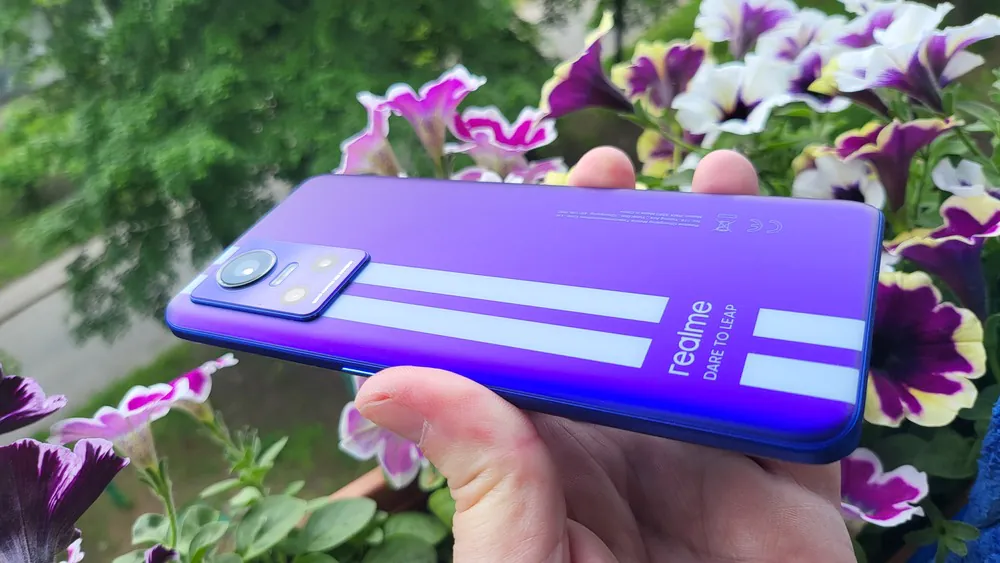
Connectivity in the realme GT Neo 3 is represented by Wi-Fi a/b/g/n/ac/ax, Bluetooth 5.3 and support for GPS, GLONASS, Galileo and BeiDou location systems. Both SIM cards support 5G networks, and there is NFC with antennas throughout the device. The only connector in the smartphone is USB Type-C, there is no headphone jack, as well as no support for FM radio or infrared. Sensors here include an accelerometer, gyroscope, proximity and light sensors, a magnetic compass, and a Hall sensor for interacting with accessories.
Read also: Realme Pad Mini Review: Compact and inexpensive tablet
Software: Android 13 with realme UI 4.0
The realme GT Neo 3 comes with Android 13 out of the box, and the in-house developed graphical add-on is called realme UI 4.0. In my opinion, this is one of the most user-friendly shells, which has good graphics with personalisation options and, conversely, does not use too much pre-installed ballast (compared to others). But I am concerned about the fact that many related things are in three or more different places in the settings, in the tenth submenu. Of course, this is an exaggeration, but the association of related things is much weaker here.
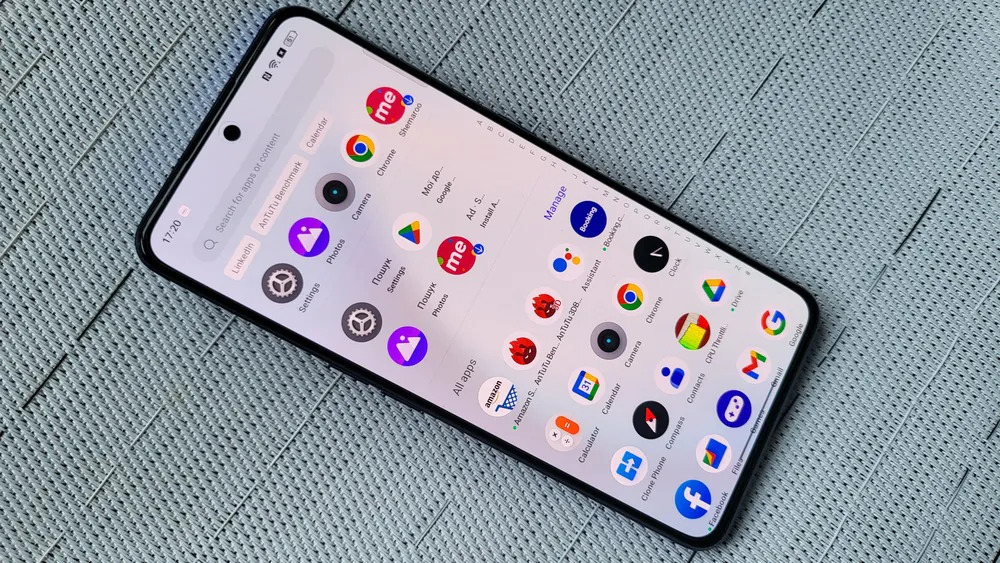
Facebook, Amazon Shopping, TikTok, Booking.com, and LinkedIn are unnecessary add-ons for many users, and the manufacturer has also added a small number of its own applications, such as Music, Video, Games, or proprietary tools. You can see them in our screenshot gallery.
As for the environment, you can choose between icons on the desktop or in the menu, control with three buttons, or, already familiar to many, gestures. Among the standard controllability improvements are the ability to wake up the smartphone by lifting or double-tapping, mute the sound by swiping, answer a call without holding it to your ear, block it, or view received notifications by swiping down.
You can customise the flags on the app icon, individual icons in the status bar at the top of the display, the time format, and the battery indicator. Other gestures include: when the screen is off, draw a V to turn on the flashlight, draw an O to turn on the camera, draw symbols for pause/previous/next track to control music, and seven more pre-made shapes waiting for you to assign an action to them.
Of course, there is a gesture for one-handed control in the form of sliding the lower half off the display and the upper half on top (rather than just shrinking the display). And a new feature is the ability to simply drag the icons on the home screen at the bottom with a gesture to the side of the display. When unlocked with a fingerprint, if you don’t raise your finger, selected apps can be launched directly, and you can also activate the smart sidebar with quick shortcuts, although you cannot select them yourself. In addition, there are widgets, which are called flexible windows here. All applications can be displayed in this way, although their management in the shortened mode may sometimes not work properly, and special management is only available to those who are prepared for it.

It’s quite a modern and advanced shell, although you may not like some things. It doesn’t take long to get used to working with a smartphone, but if you’re new to realme UI, I recommend spending some time to get to know it better.
Read also: Realme 10 Smartphone Review: A New Mid-Range Hit?
Realme GT Neo 3 camera with Sony sensor and optical stabilisation
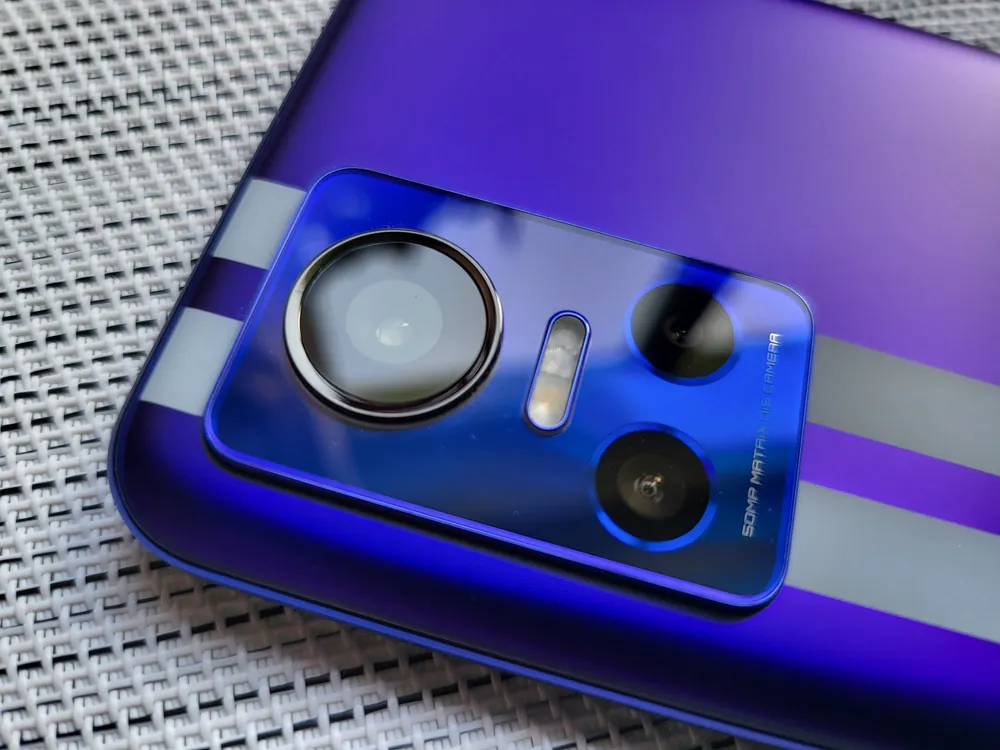
The main sensor of the realme GT Neo 3 is the 50-megapixel Sony IMX766, which is equipped with optical stabilisation for photography and electronic stabilisation for video recording. This year, most mid-range and flagship phones have such a sensor. Pictures with the main sensor are exceptionally good. In good lighting conditions, the pictures are full of detail with good colour saturation and accuracy.
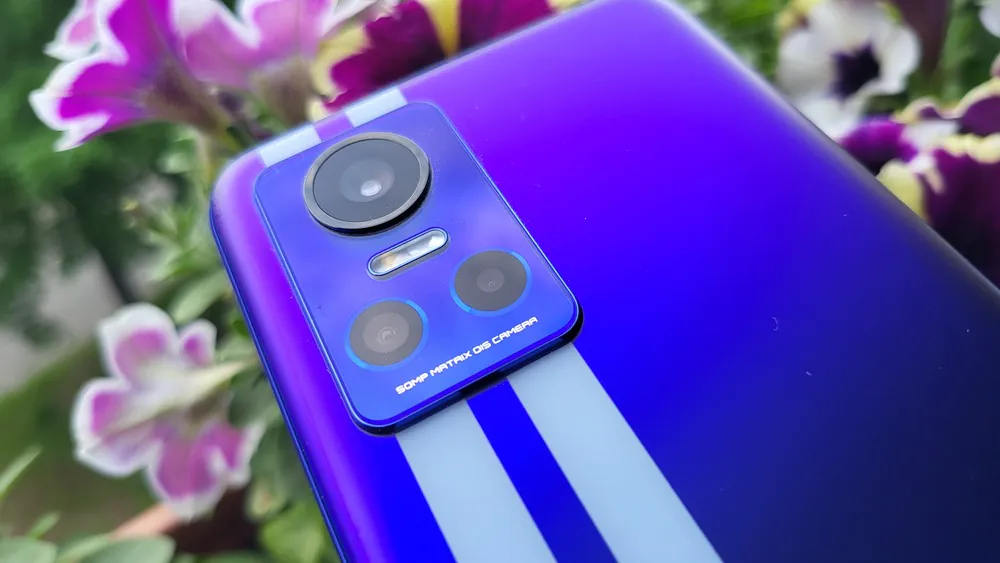 The 50-megapixel Sony IMX766 produces colour photos with good dynamic range, a decent amount of detail and a minimum of noise and various distortions. Optical stabilisation is excellent, but the predictive focus is not so good, because the smartphone sometimes hesitates.
The 50-megapixel Sony IMX766 produces colour photos with good dynamic range, a decent amount of detail and a minimum of noise and various distortions. Optical stabilisation is excellent, but the predictive focus is not so good, because the smartphone sometimes hesitates.
However, sometimes the combination of active AI and active HDR produces a picture that can sometimes be described as an “oil painting” because it contains large areas of unnatural colour shades and loses a lot of detail. This is not very common and only occurs in certain types of scenes. But in most cases, you should expect a good result.
There is also an ultra-wide 8-megapixel sensor. For the most part, it’s very handy to have this sensor. It can give you great landscape shots, but I clearly felt a decrease in quality compared to the main sensor.
If you need to, the phone has a 2-megapixel macro sensor that you can use when you turn on the ultra-macro mode in the camera app. Although I didn’t always manage to take good pictures in macro mode.
As it turned out, the smartphone is capable of taking excellent pictures in low light conditions, even without using the night mode. However, if you need to activate the latter, you will see that the pictures will have fewer dark areas and more pronounced saturation. My personal opinion is that the night images are definitely above average, but the realme is still a long way from competitors from Huawei or Google.
The camera module of the realme GT Neo 3 is very similar to that of the 9 Pro+. Unfortunately, it also doesn’t have a telephoto lens, which could improve the camera’s performance.
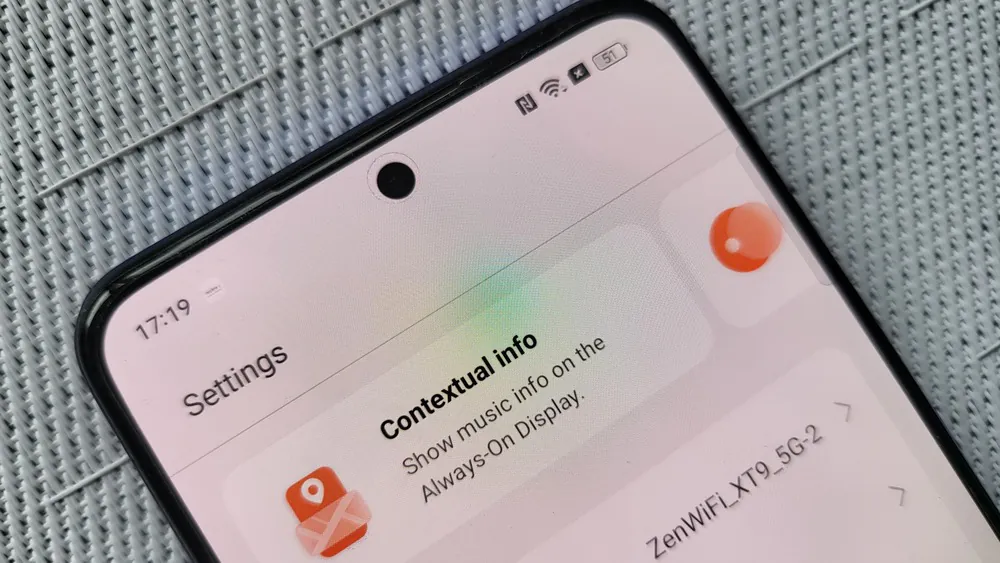
The 16-megapixel front-facing camera also takes pretty decent selfies that you can share with your friends on social media.
Now a few words about video recording. It should be noted that realme GT Neo 3 has a maximum video recording resolution of 4K at 60 frames per second. Even if competitors can offer more, I believe that this is more than enough for mobile devices.


I’d like to point out that according to the manufacturer’s website, electronic image stabilisation works at a maximum resolution of Full HD and 60 frames per second, so unfortunately you’re out of luck with 4K. I was also surprised by how poorly the smartphone copes with eliminating wind noise in the captured video, which can sometimes completely destroy the sound track in the entire recording. Otherwise, when shooting video, I got good colours and a decent level of detail, no tearing, smooth exposure changes, and maybe only HDR could be less aggressive.


Read also: Realme C33 review: what to expect from a $140 smartphone?
What about battery life?
Of course, realme attracts potential buyers with the fast charging of the GT Neo 3. Thanks to the 150W adapter, you can charge the 4500mAh battery from 0 to 100% in an incredible 15 minutes. Just look at these amazing numbers!
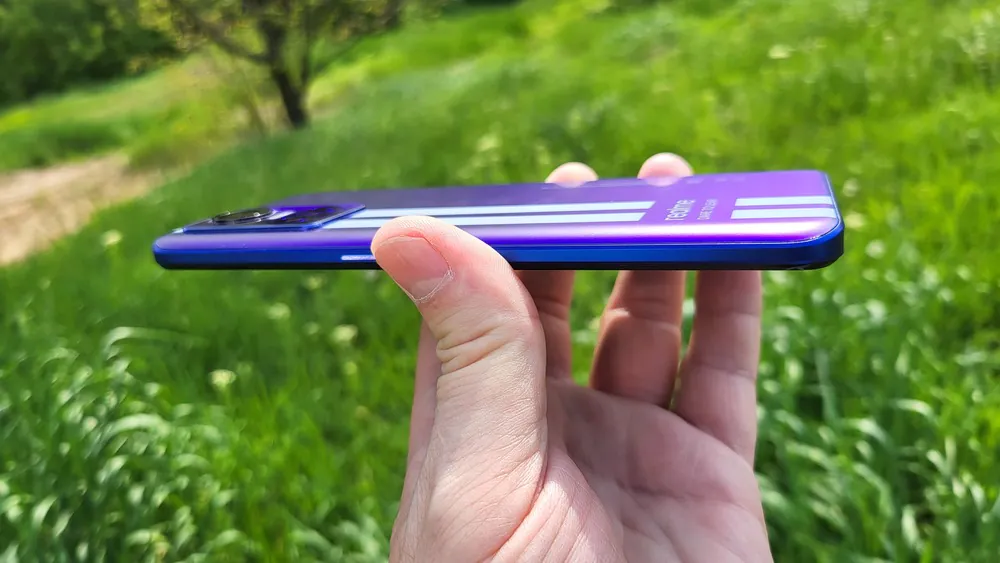 Above-average endurance considering the performance and demanding display. If you turn on the 120Hz refresh rate and use your mobile device in a typical way for an average user, such as taking photos, browsing the web, social media, or making calls to family, work colleagues, and friends, you’ll have about 25-35% of battery life left in the evening. This is not bad, although it is standard.
Above-average endurance considering the performance and demanding display. If you turn on the 120Hz refresh rate and use your mobile device in a typical way for an average user, such as taking photos, browsing the web, social media, or making calls to family, work colleagues, and friends, you’ll have about 25-35% of battery life left in the evening. This is not bad, although it is standard.
The advantage is that fast charging is exactly what you need when you know you need to recharge quickly. It only takes about 5 minutes to charge your smartphone to 50%. This is really impressive.
| Battery charge capacity | Charging time, min |
|---|---|
| 10% █ ░ ░ ░ ░ ░ ░ ░ ░ ░ | 1 |
| 20% █ █ ░ ░ ░ ░ ░ ░ ░ ░ | 2 |
| 30% █ █ █ ░ ░ ░ ░ ░ ░ ░ | 3 |
| 40% █ █ █ █ ░ ░ ░ ░ ░ ░ | 4 |
| 50% █ █ █ █ █ ░ ░ ░ ░ ░ | 5 |
| 60% █ █ █ █ █ █ ░ ░ ░ ░ | 7 |
| 70% █ █ █ █ █ █ █ ░ ░ ░ | 9 |
| 80% █ █ █ █ █ █ █ █ ░ ░ | 10 |
| 90% █ █ █ █ █ █ █ █ █ ░ | 13 |
| 100% █ █ █ █ █ █ █ █ █ █ | 15 |
That is, you can brush your teeth and take a quick shower in the morning, and your smartphone will be ready to go. I was pleasantly surprised by the fact that the realme GT Neo 3 does not heat up more than I expected, given the powerful 150W charging.

The only thing that confused me was the lack of wireless charging, which (unfortunately) is already a traditional problem for realme mobile devices.
Read also: Review of the budget smartphone realme C55: unusual in everything
Summary
Everything in the realme GT Neo 3 seems to be subordinated to speed. It looks like a supercar itself, and other things are forgotten or fade into the background. The emphasis here is on top-notch performance, high display refresh rates, extremely fast charging, and an optimised environment, but everything else is left behind. For example, the system logic and sometimes its complexity, cameras that don’t quite match the price, or the lack of certain things like increased endurance or wireless charging. All of these are things that speed takes precedence over here.
Although there’s really nothing to criticise here. Wireless charging is not a priority for most users. And in realme GT Neo 3, it is also covered by ultra-fast 150W wired charging. Indeed, 15 minutes and your smartphone is ready to help you conquer the world again. And I’m not even talking about the cameras. For most users, they will be enough, and those who want more photographic capabilities should pay attention to flagship models.
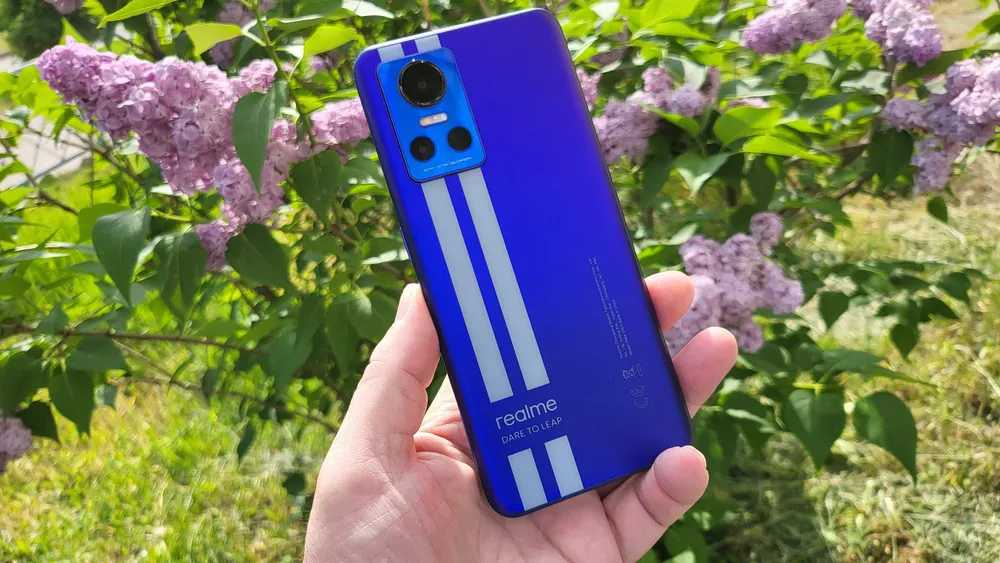
The realme GT Neo 3 is an upper mid-range smartphone that is already in the flagship territory. It has a very good main camera, a sleek design, a fairly powerful processor and efficient battery management features. You’ll find all this in this well-balanced smartphone. In addition, we should mention the impressive 120Hz display, which complements the stunning AMOLED panel.
If you’re looking for a smartphone with an unusual design, a gorgeous AMOLED display, the latest Android 13, a top-of-the-line processor, and a unique 150W charging experience, the realme GT Neo 3 is a great choice.
Advantages
- High-quality execution and original design
- An excellent AMOLED display with high brightness and a refresh rate of 120 HzHigh-quality stereo speakers with Dolby Atmos and Hi-Res Audio
- Reliable fingerprint reader and 360° NFC
- The power of the chipset is enough for any activity
- New Android 13 with realme 4.0 out of the box
- Good main camera with OIS, high quality photos and videos in good lighting
- Excellent battery life and 150W max charging
Disadvantages
- No memory card slot
- No wireless charging and no enhanced protection
- The ultra-wide camera could be better
- An illogical add-on, some items have sunk deep into the menu
- Quite a high price
Read also:
- Motorola Edge 30 Ultra Review: Can Moto Make Flagships?
- Google Pixel 7 Pro review: The machine is learning
- Xiaomi 12 Pro Flagship Review: Is It Worth Choosing?



